AMD Radeon RX Vega review: Vega 56, Vega 64, and liquid-cooled Vega 64 - shieldsdinen1964
At a Glimpse
Expert's Military rank
Pros
- Faster than the GTX 1070
- FreeSync monitors are cheaper than G-Sync monitors
- Cool under load
Cons
- Big fan
- Uses more than tycoo than the competition
Our Finding of fact
AMD's Radeon RX Lope Felix de Vega Carpio 56 manages to comprise slightly more powerful than the GeForce GTX 1070 while generating less high temperature. Information technology's a great choice for wholly gambling take out 4K.
Best Prices Today

Not Available
After months of teases and delays, the expect for Vega is finally over. First, AMD launched its flagship Radeon RX 64 lineup: the $499 Radeon RX Vega 64 and the $699 liquid-cooled Radeon RX Lope Felix de Vega Carpio 64, which is only uncommitted atomic number 3 part of a convoluted "Radeon Aqua Pack" bundle. (Update:After the initial moving ridge of availableness, virtually all available air-cooled Radeon RX Vega 64 cards are only available in $599 Radeon Packs too.) Then on August 28, the $399 Radeon RX Vega 56 tally the streets. And for the foremost time in a long time—over a twelvemonth, in fact—the Reddened Team is fielding high-end graphics cards capable of challenging Nvidia's enthusiast-class hardware.
These are the first high-stepping-oddment Radeon chips built victimization the 14nm technology process, following in the footsteps of AMD's mainstream-focused Polaris nontextual matter card game. Does Radeon RX Vega wrest the performance crown from the ferocious GeForce GTX 1080 Ti? Spoiler alert: Not even careful. Simply Vega provides an provocative—and sometimes compelling—disjunctive to the GTX 1070 and GTX 1080, yet if it ISN't the walk-soured home run that AMD enthusiasts have been hoping for ever since Radeon marketing took a swipe at Nvidia's next-gen Volta artwork architecture eight long months ago.
This won't equal a short review. We're introducing AMD's new Vega graphics architecture besides as testing three different Radeon RX Vega graphics cards supported that computer architecture. You can utilization the table of contents bar to the left to warp to the sections you're most interested in.
This review was originally published on August 14, 2017 with Vega 64's arrival but was updated with more information for Vega 56's August 28 launch.
Meet Radeon RX Vega 56 and RX Vega 64
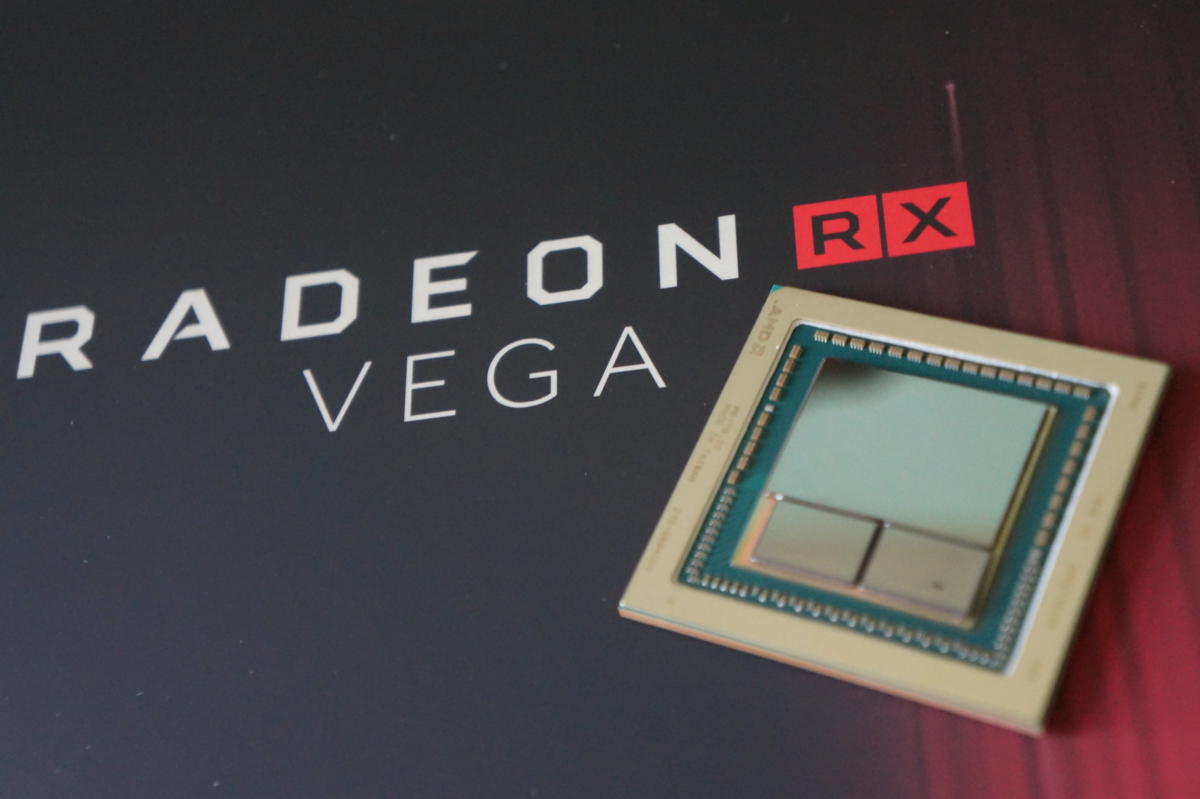 Brad Chacos/IDG
Brad Chacos/IDG AMD transmitted PCWorld all rendering of Lope Felix de Vega Carpio for testing, including both the air-cooled and liquid-cooled versions of the Radeon RX Vega 64. While the innovation and cooling obviously take issue, the cardinal models share the same underlying hardware.
The water-cooled Vega 64 hits higher clock speeds (and thus higher levels of performance) thanks to its embrace of liquid, but unfortunately we can't recommend IT. The card sure looks pretty merely it disappoints on bad much every other face, twice so because information technology's addressable only in a dear $699 "Radeon Aqua Pack" variant. We'll get into the inside information through the review, or you can abridged trabeated to the chase in our Buying Advice incision.
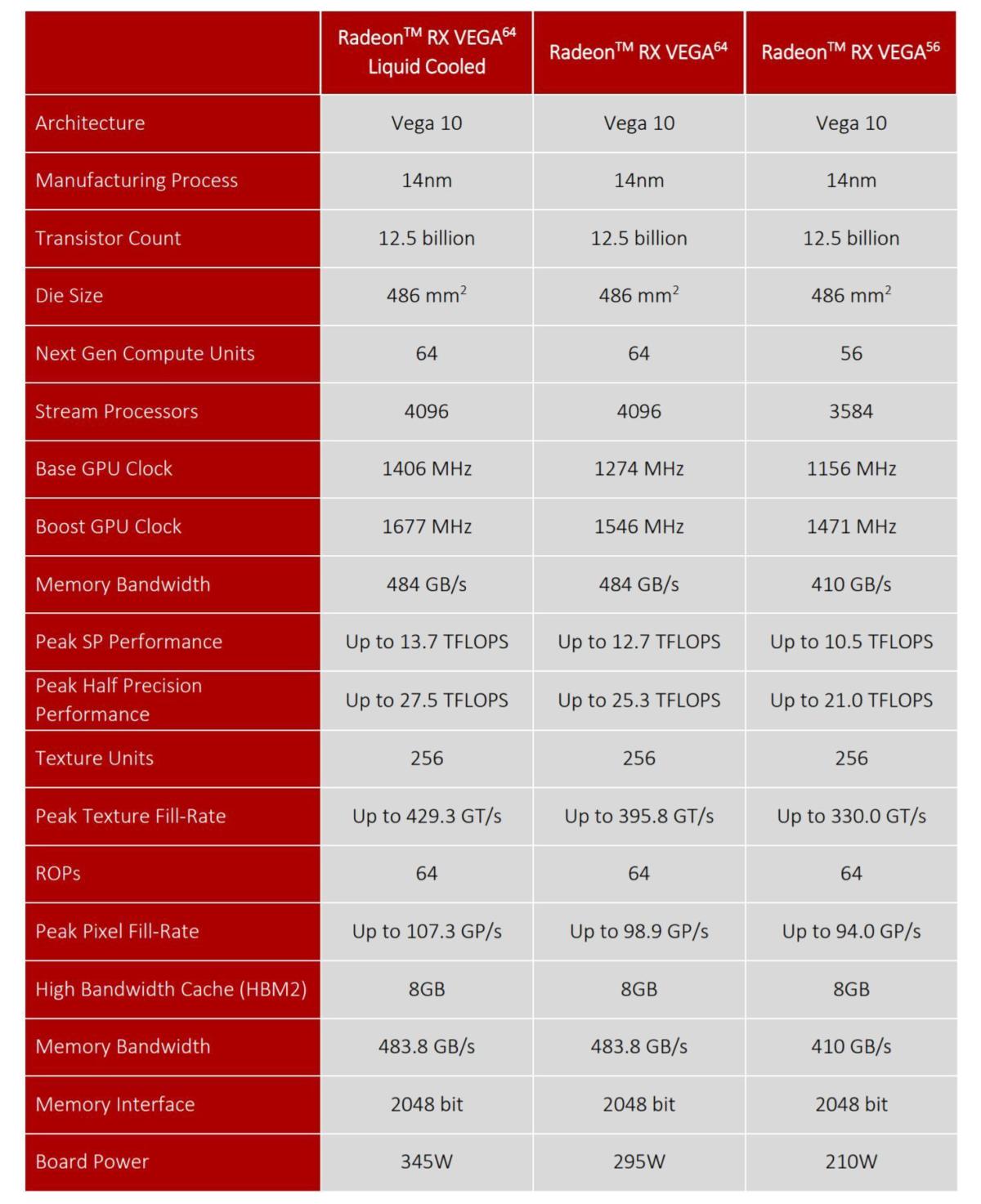 AMD
AMD Vega 64's technology mirrors that of the Fiji GPU found at bottom older Radeon Fury X in many ways. Some GPUs plurality 4,096 steam processors, with 64 reckon units (therefore the constitute), 256 texture units, and 64 ROPs. Likewise, the Radeon RX Vega 56's innards resemble those of the Fury X's similarly cut-down sibling, the Radeon Erinyes. But the compute units inner Vega are "next-gen CUs"—to a greater extent on that and other deep-level tech later—and Vega distinguishes itself in to a greater extent manifest ways, too.
The Radeon Technologies Group tuned Vega to run at uttermost higher clock speeds than its predecessor. While the Fury card game hovered around 1,000MHz, the air-cooled RX Vega 64 baselines at 1,247MHz, with a rated boost clock speed of 1,546MHz. The liquid-cooled variant pushes that regular advance, to 1,406MHz base and 1,677MHz encouragement. Vega 56, meanwhile, bottoms out at 1,156MHz and boosts to 1,471MHz—Oregon potentially more. Spell the boost clocks of previous Radeon cards were a hard maximum, AMD is mimicking Nvidia's methodological analysis for Lope Felix de Vega Carpio. The listed boost clocks for the Radeon RX Vega 56 and 64 "represents the typical mean clock speed one might picture while play" now, to quote AMD's reviewer's guide. Groovy.
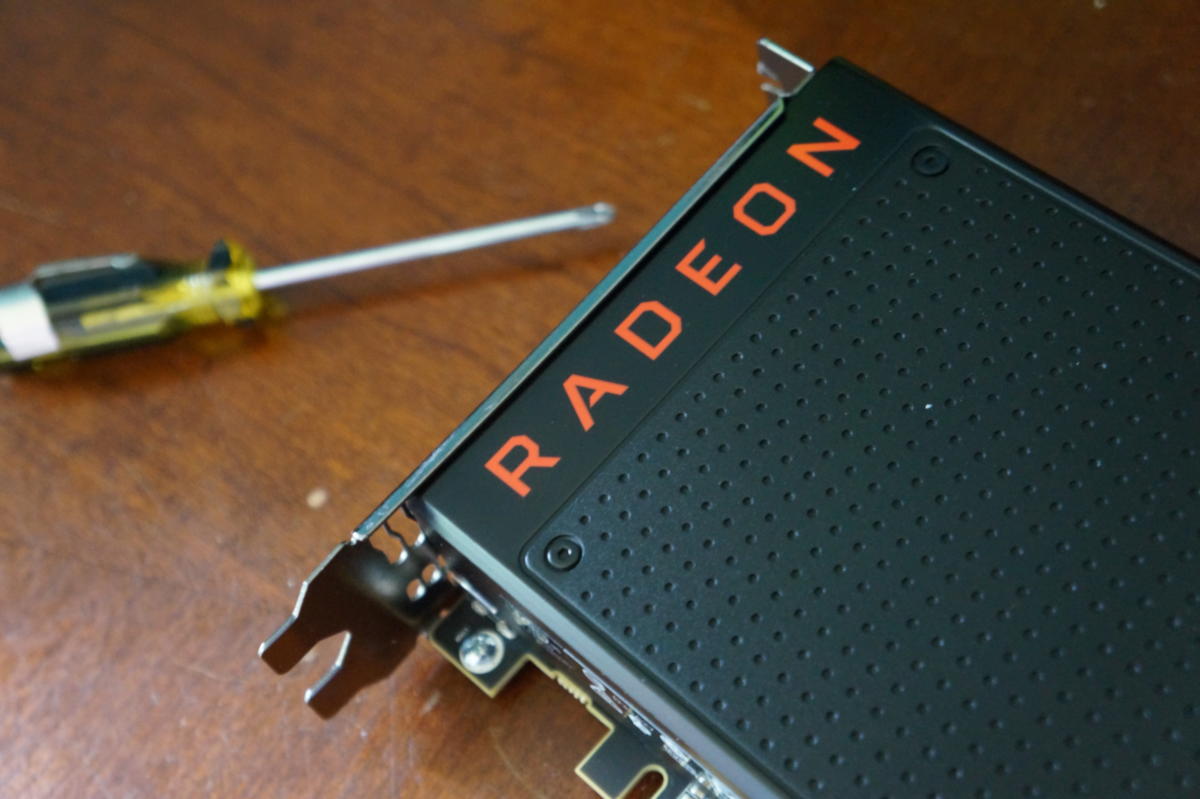 Brad Chacos/IDG
Brad Chacos/IDG Vega's remembering capabilities took a turn for the better, too. Like the older Fury cards, Vega uses up-to-date high-bandwidth memory. But while the Fury cards utilized first-gen HBM that was controlled to 4GB of capacity—and can now struggle in some high-final stage games because of it—the Radeon RX Vega lineup leans on a Thomas More advanced HBM2 design with 8GB of aboard computer memory. At 484GBps, RX Vega 64's memory bandwidth is actually slightly less than the Fury X's entire (it slay 512GBps) due to the use of fewer HBM stacks along-die, but still far ahead of the GTX 1080's 320GBps via 8GB of GDDR5X retention. The 11GB GeForce GTX 1080 Ti offers identical store bandwidth to Vega 64, while Vega 56 is slightly slower at 410GBps.
With 8GB of HBM2 you're implausible to hit a memory bottleneck anytime soon—that's doubly true thanks to an forward-looking new feature enabled by Vega's high-bandwidth hoard controller. Again, more on Lope de Vega's macro red-hot technical school features later.
The air-cooled Radeon RX Vega 64 leave be on tap in two forms: a basic interlingual rendition that looks like the reference versions of the Radeon RX 400/500-series Polaris graphics card game, exclusive longer, and a Limited Edition with a brushed aluminum exterior. Pocket-size Edition cards will be sold only to first RX Lope Felix de Vega Carpio 64 buyers until supplies last, and AMD wouldn't say how many are being produced. All Vega cards include a backplate. We're reviewing the regulation models but snagged a pic of the Limited Edition at AMD's Vega announcement at Siggraph.
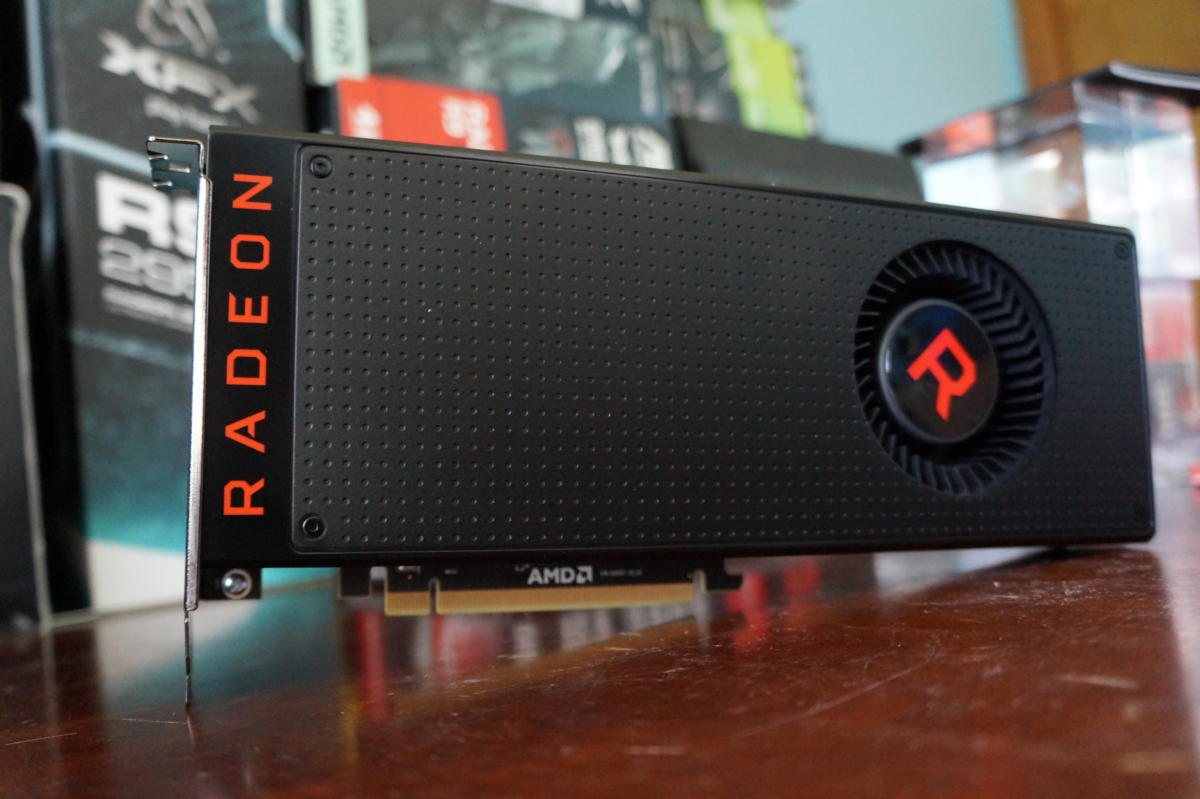 Brad Chacos/IDG
Brad Chacos/IDG 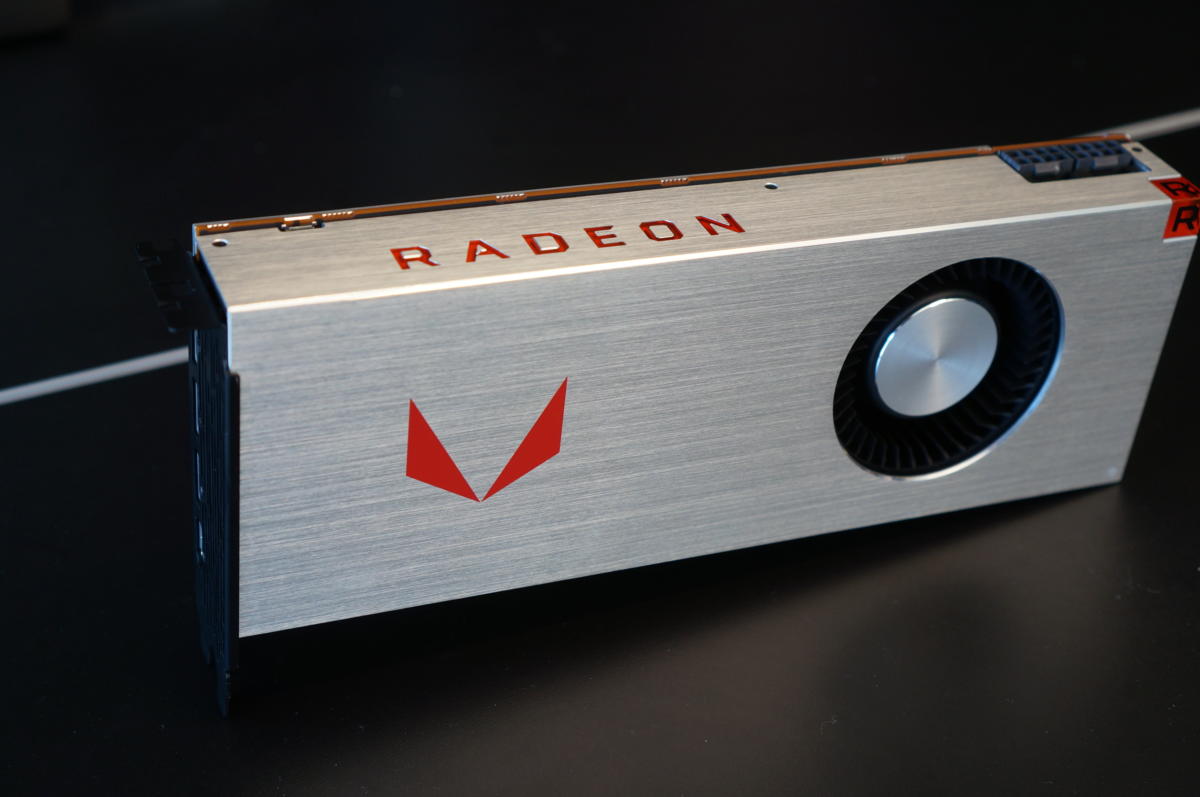 Gordon Mah Ung/IDG
Gordon Mah Ung/IDG The Radeon RX Vega 56 looks similar to the standard RX Vega 64. While they some mime the Polaris character reference cards at a quickly glance, the Vega cards are longer (despite using space-saving HBM2 memory) and dump Polaris's plastic shell for sturdier metal materials, including a backplate. The Radeon logo connected the side inch of Vega card game glows red. More importantly, the Vega cards practice a vapor-sleeping room cooler that improves upon the introductory electric fan fan of Polaris. In the pic below, you can compare the Vega 56 (at top) to the Radeon RX 480 reference card (deep down).
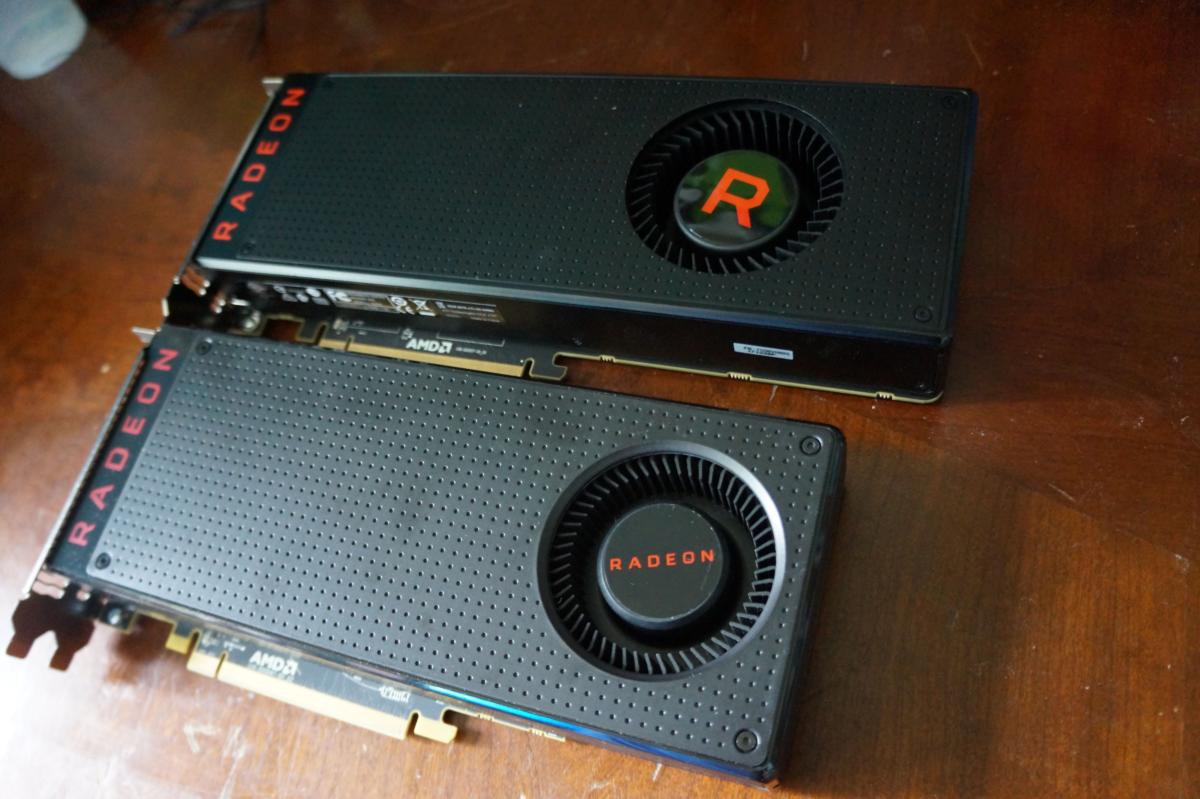 Brad Chacos/IDG
Brad Chacos/IDG 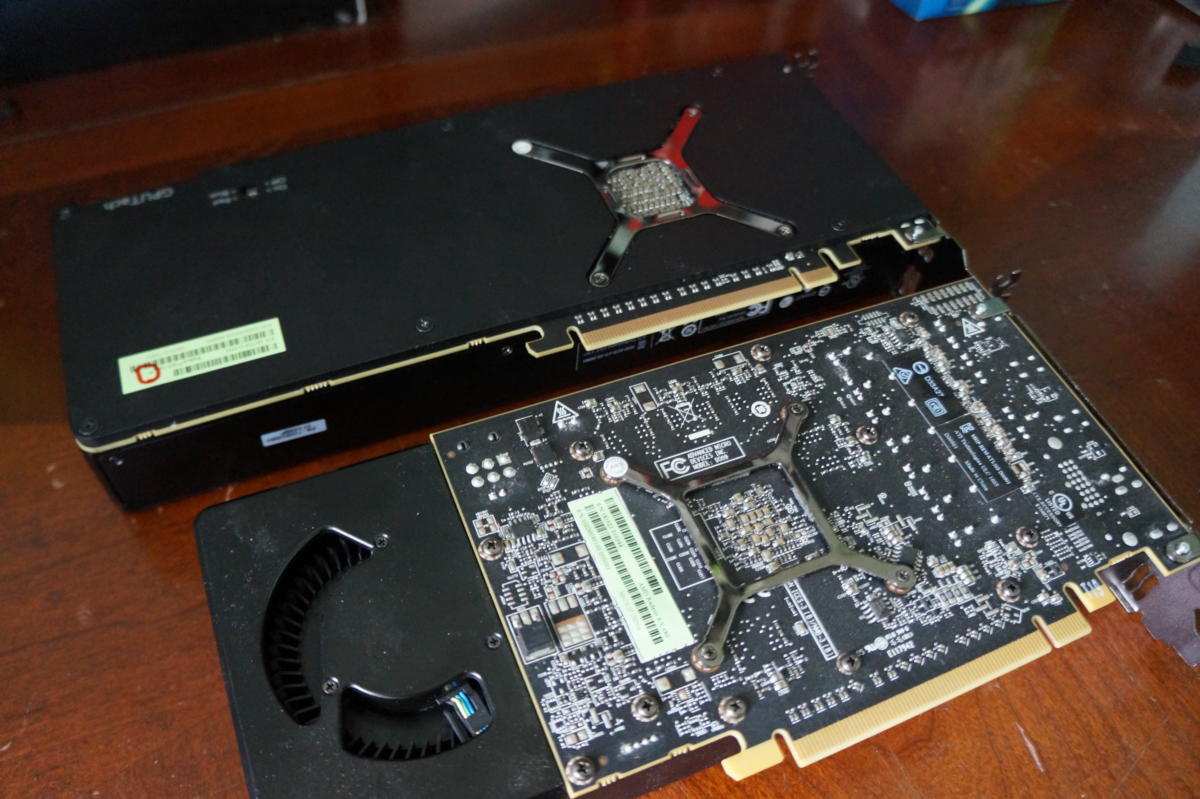 Brad Chacos/IDG
Brad Chacos/IDG We're also reviewing the fluid-cooled rendering of the Radeon RX Vega 64. It bears the same brushed-aluminum design as the airwave-cooled Vega 64 Limited Edition, but ditches the blower-style fan in favour of co-ordinated weewe-cooling with a 120mm radiator, similar to the Fury X's design. From its inhospitable, unblemished face to that ruby-colored "R" in the corner, the liquid-cooled Vega 64 is beautiful—such soh that my non-techie married woman walked into my spot, saw the batting order in its package, stopped dead in her tracks and gasped, "God, that's beautiful." That's a first.
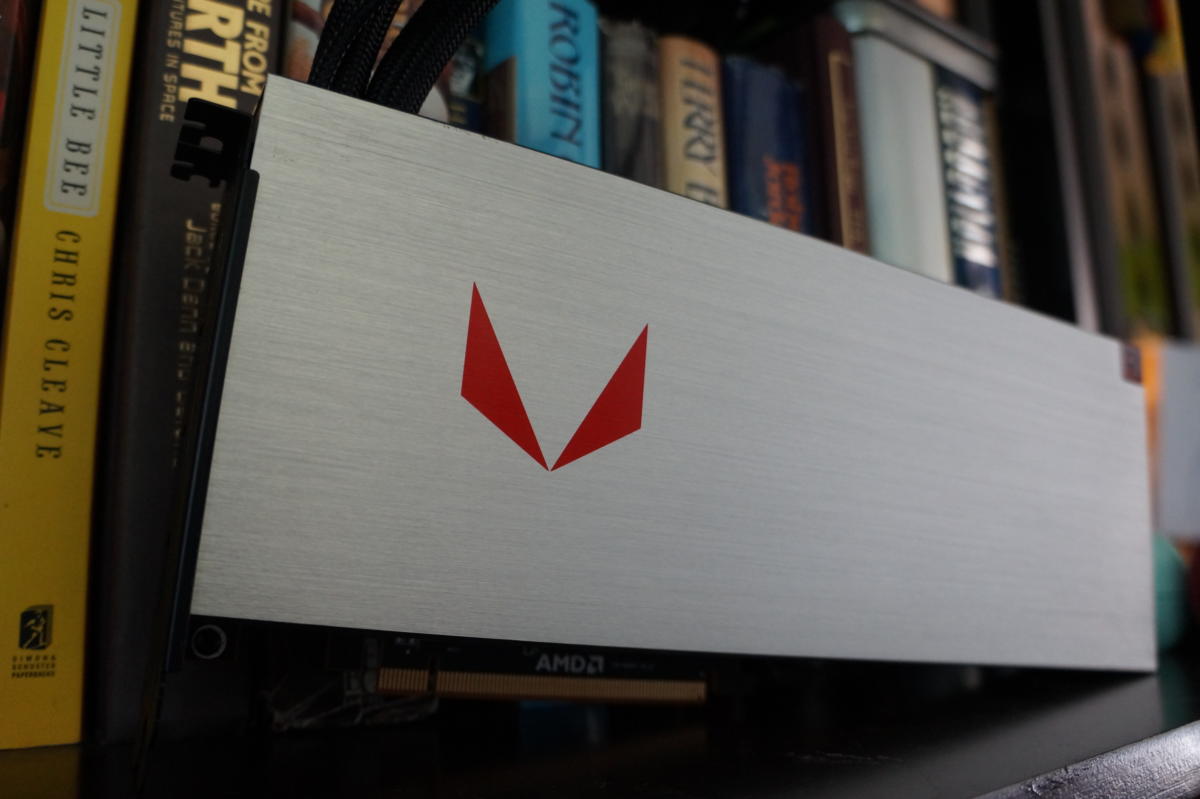 Brad Chacos/IDG
Brad Chacos/IDG 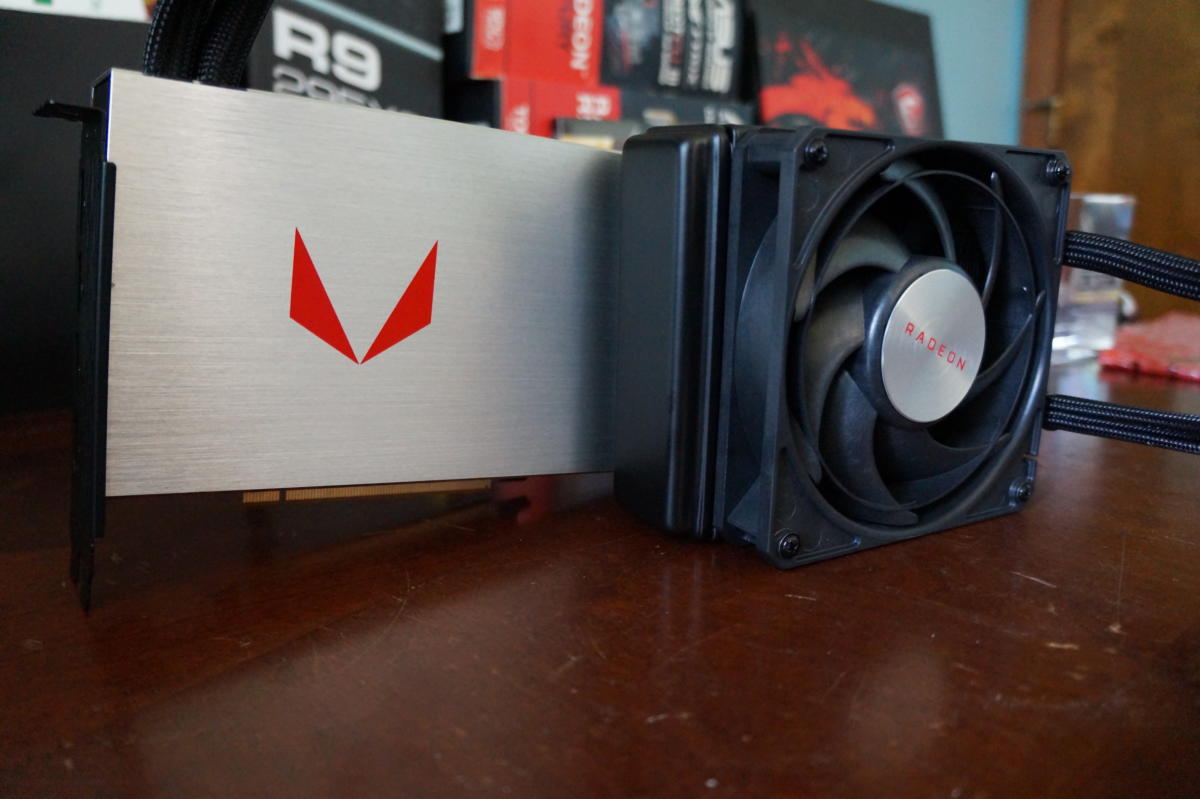 Brad Chacos/IDG
Brad Chacos/IDG  Brad Chacos/IDG
Brad Chacos/IDG But any points this notice gets for attractiveness are offset by the ill-conceived tubing for the liquid-cooling. The older Fury X featured shorter tubing that up from the end of the bill of fare, providing just enough length to set up its 120mm radiator in the optimal fan spot at the rear of your case. Past contrast, the liquid-cooled Vega 64 awkwardly sprouts its tubing from the very head-on butt against of the card, vindicatory tush the I/O bracket—and directly underneath where your radiator will likely be installed in your case. That could've been okay with short tubing, but Vega 64's liquid-cooling tubes are in reality thirster than the Fury X's (as you attend below), yet too myopic to be able to comfortably route back round the end of the card.
The end result? We had to gather the problematic bundle of semiliquid-cooling tubes underneath the card. It wasn't very attractive and would've likely caused close to headaches if we'd had other PCI-E devices installed in our mid-tower PC case. Longer tubing is handy for installing reservoirs elsewhere in your grammatical case, but this design feels corresponding it could be more twee.
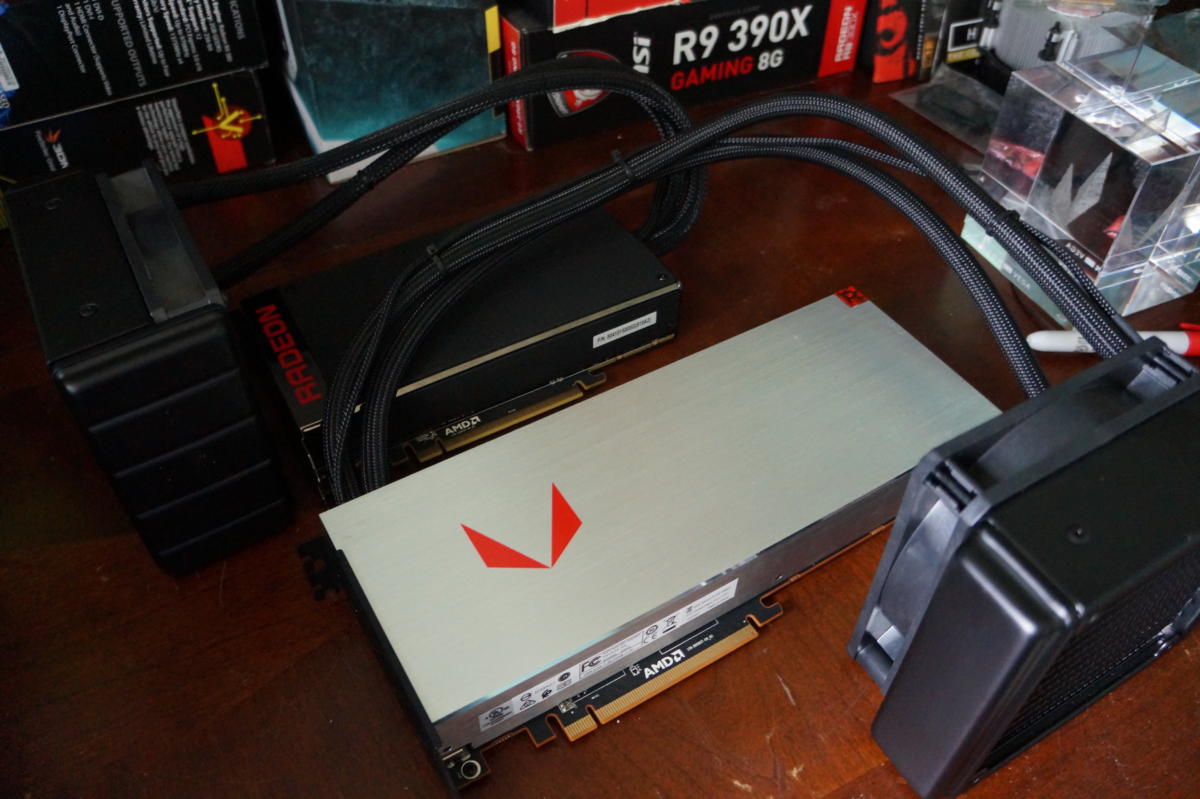 Brad Chacos/IDG
Brad Chacos/IDG 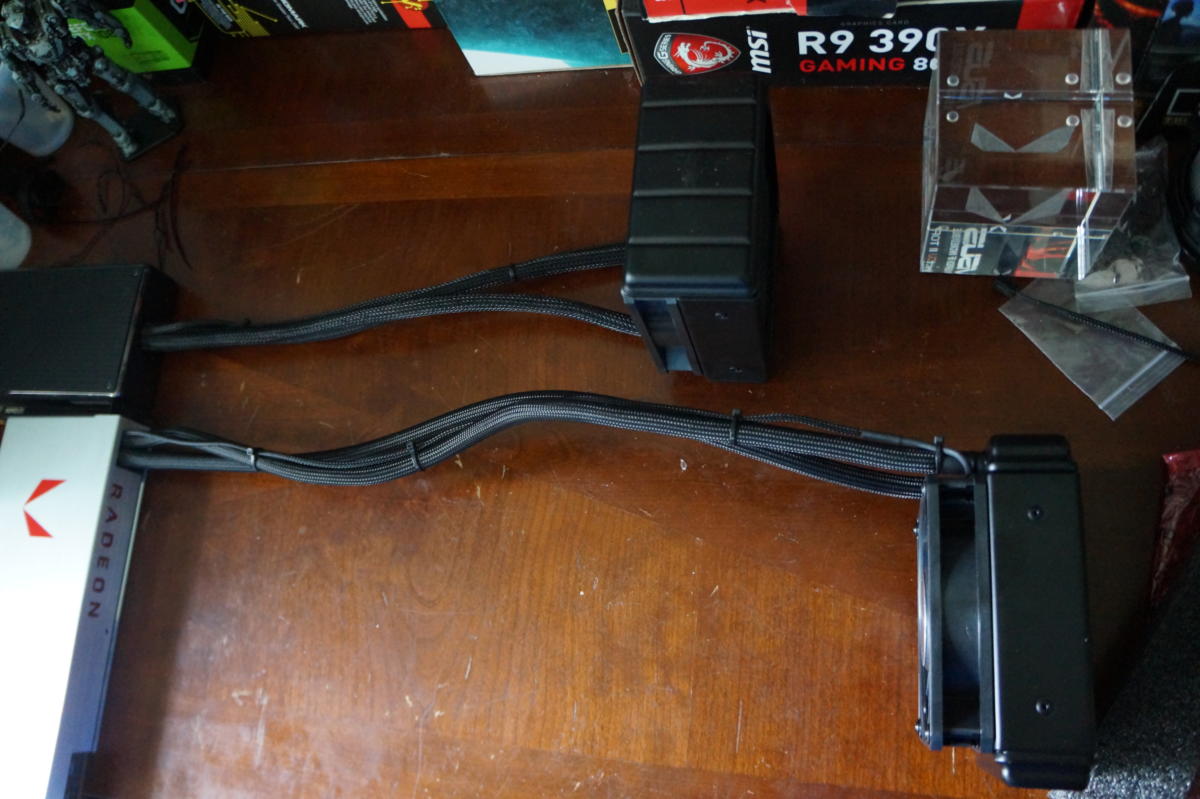 Brad Chacos/IDG
Brad Chacos/IDG 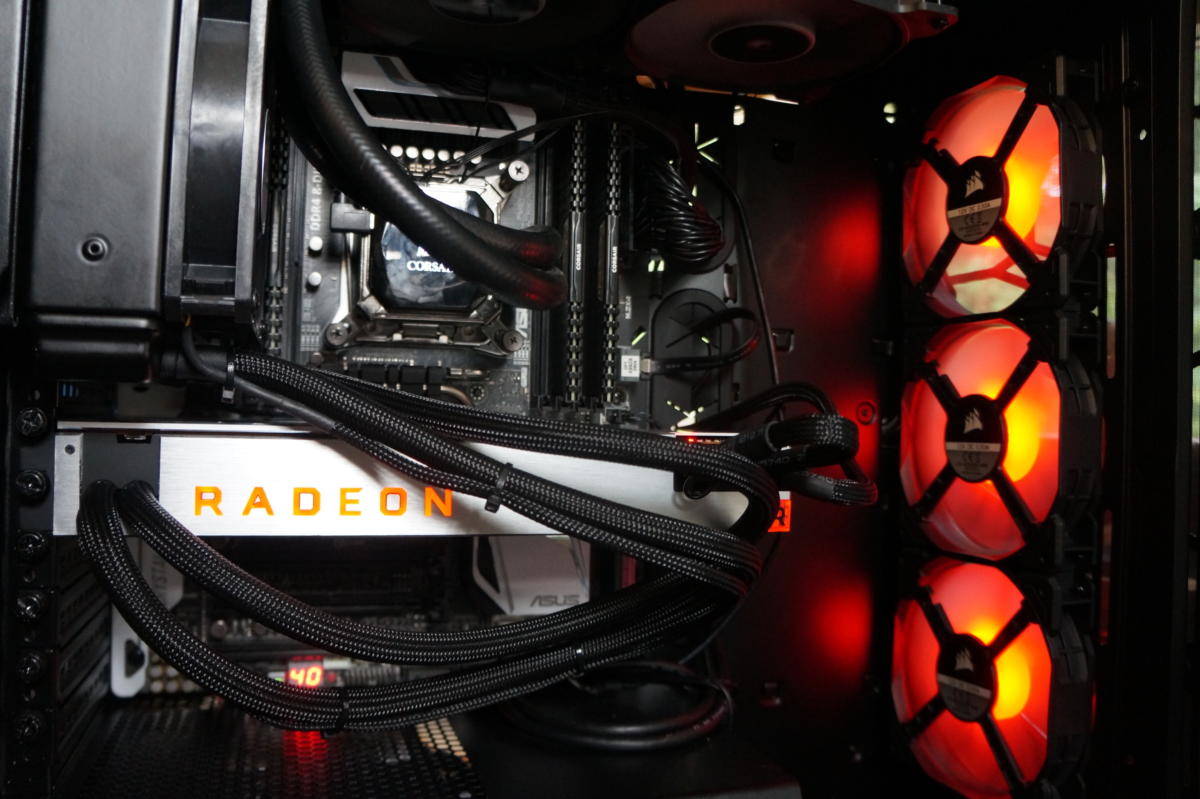 Brad Chacos/IDG
Brad Chacos/IDG Radeon RX Vega cards include a trio of DisplayPort 1.4-ready outputs and an HDMI 2.0 port. The architecture's updated display engine can support upwards to two 4K/120Hz panels, or a trio of 4K/60Hz displays. That's a solid pile of pixels! And of line, Vega card game support AMD's FreeSync technology, which eradicates stuttering and screen-intense connected compatible monitors. It's a major factor in the value proffer that Radeon merchandising is pushing for Vega.
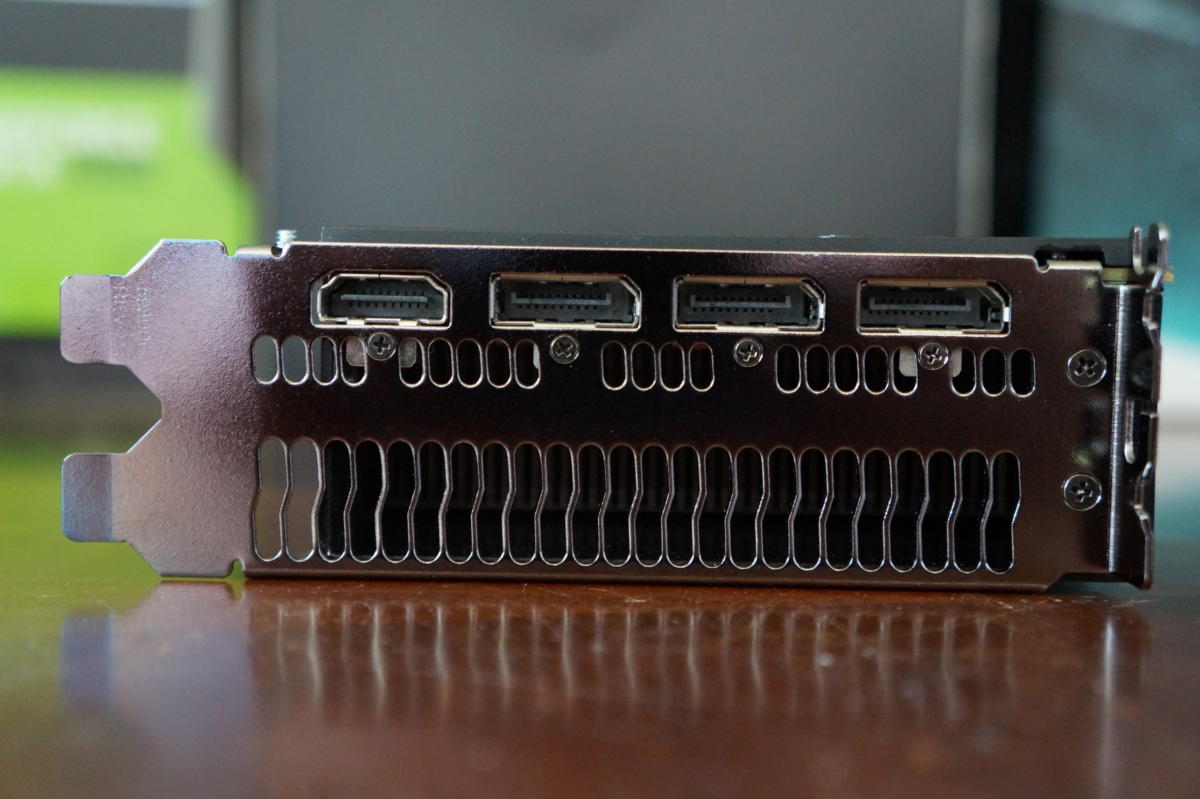 Brad Chacos/IDG
Brad Chacos/IDG Both versions of the Radeon RX Vega 64 also lark the nifty "GPU tachometer" characteristic that debuted with Fury. A crease of LED lights above the power connectors news bulletin to life correlating with the GPU load. The harder you put the pedal to the metal, the more lights break open.
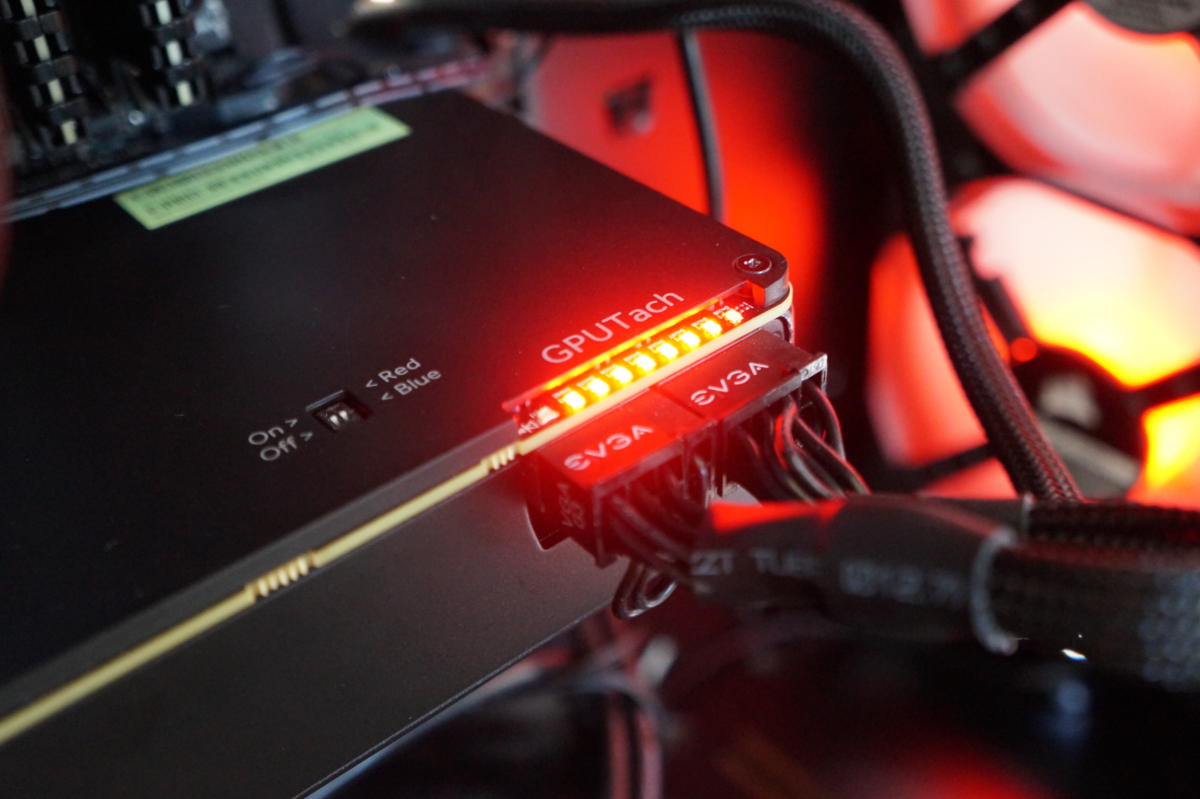 Brad Chacos/IDG
Brad Chacos/IDG It's silly, but I adored it in Fury and I still adore it now. There's just something satisfying about seeing the GPU tachometer start shining when you boot up a game.
Next page: Lope de Vega's customizable power profiles
Radeon RX Vega power profiles
 Gordon Mah Ung/IDG
Gordon Mah Ung/IDG All Radeon RX Vega card game also pack a pair of 8-thole great power connectors, and permanently reason. The air-cooled version of Vega 64 is rated for a banging 295 watts of total board power, and the liquid-cooled example pushes that all the way to 345W. Aside contrast, Nvidia's GTX 1080 has a 180W TDP and only requires a single 8-pin power connector. Vega 56, on the strange hand, has a less imposing 210W TDP.
AMD's liquid-cooled Vega 64 review box explicitly states that the add-in needs a minimum of a 1,000W power add, compared to the air-cooled version's 750W requisite.Hot damn. You'll be able to escape with a less-almighty PSU if you have a quality 80 Plus-rated one, though.
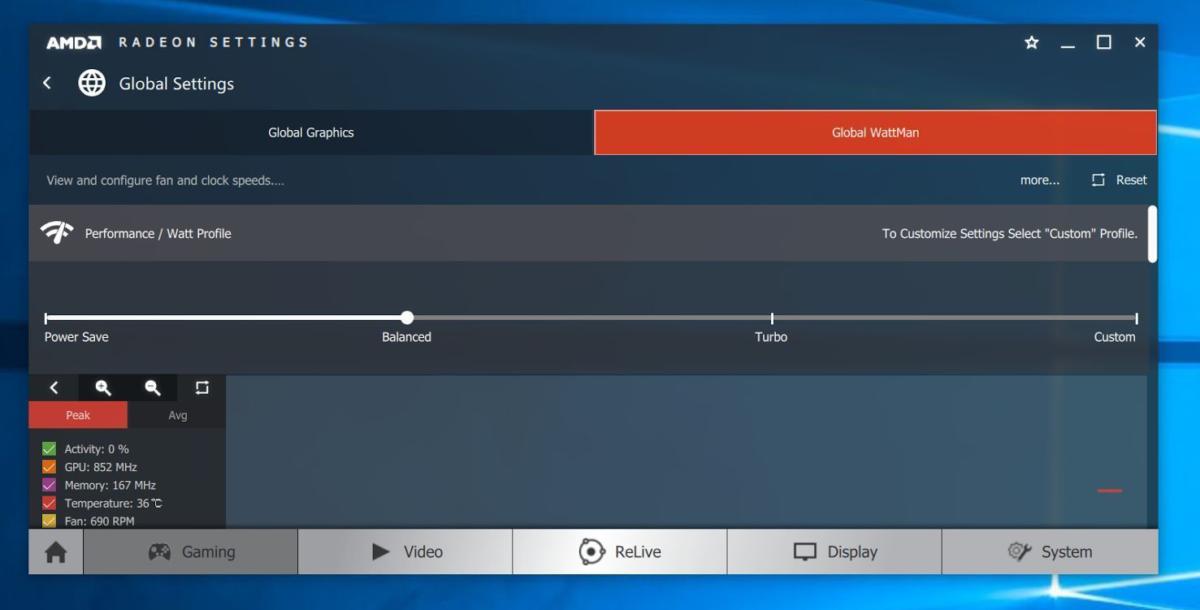 Brad Chacos/IDG
Brad Chacos/IDG AMD is combating those power concerns by introducing six antithetical power profiles for Radeon RX Vega. If you unconcealed the Global Wattman overclocking section of Radeon Software's settings, you'll find a new "carrying into action profile" slider. By default, it's set to a Balanced visibility, which balances performance and energy/acoustic considerations. You can also opt to manipulation a Power Economize profile, a whole-throttle Turbo profile, or create a custom plan. (Don't forget to click Employ to make your determination stick.)
But wait! That's not all. Radeon RX Vega also includes twofold BIOSes, swappable via a diminutive on/off switch on the edge of the notice, over the "Radeon" branding. The secondary BIOS uses the same execution profiles as the first, but uses still less power—significantly so, in the case of the Turbo visibility. Here are the GPU big businessman limits for each profile on the ventilate- and liquid-cooled Vega 64 card game, per AMD:
 AMD
AMD Unfortunately, clip constraints prevented us from examination the various power profiles extensively. AMD says activating Turbo mode in the default BIOS adds just 2 to 3 percent more operation crossways various games, but didn't declare how much power it uses. Conversely, the company says activating the Power Save visibility improves carrying into action-per-watt significantly, though its materials don't directly show the modality's effect along overall shape rates. Here's a deal what's in AMD's reviewers guide (and my email call), happening a Core i7-7700K system with 16GB of Corsair's 3,000MHz Vengeance LPX DDR4 store:
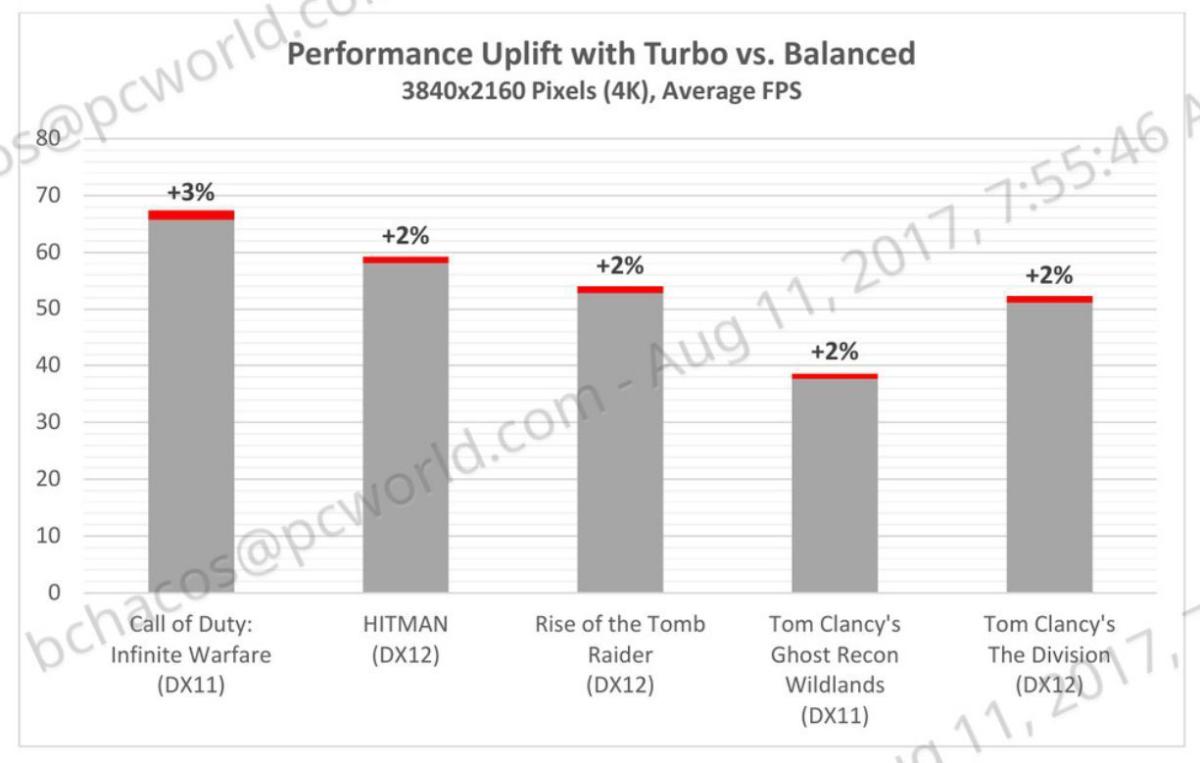 AMD
AMD 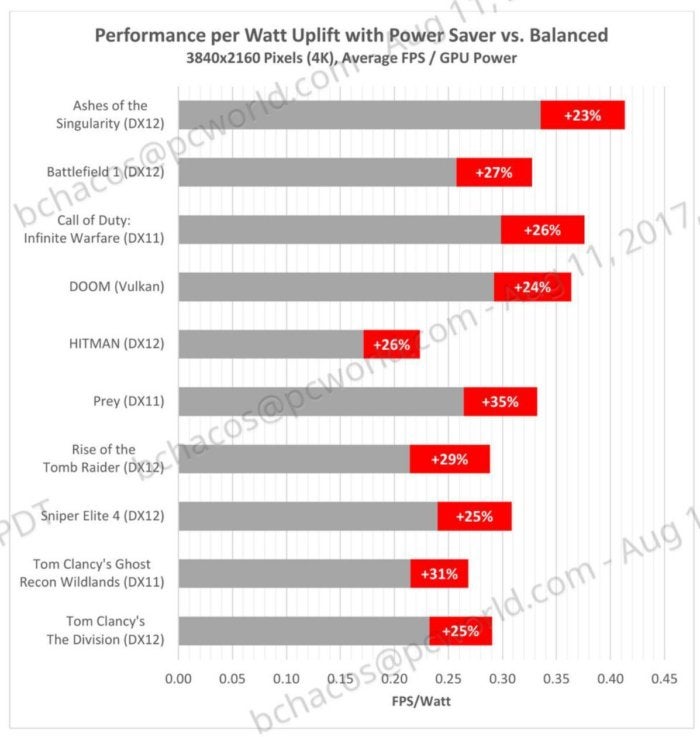 AMD
AMD AMD is also (truly) keen to point out the power-saving features baked into its Radeon Software. The Radeon Chill feature introduced in Radeon Software Crimson ReLive can greatly reduce overall power enjoyment by detecting your inputs and intelligently ramping down the GPU when you're idle. Unluckily, it's off by default and limited to whitelisted games, only that list is up to almost 40 of the most hot games about, like Witcher 3, Fallout 4, Battlefield 1, Skyrim, GTA V, Rocket Conference, and complete the major e-sports titles. If you play any of the games, be sure to enable Iciness for it in Radeon Settings.
 AMD
AMD Radeon Software also includes a Frame Rate Target Control lineament that lets you cap your target framework rate manually to save even more power and reduce noise output. If you have a 60Hz monitor, for example, you could set FRTC to 60fps and prevent your GPU from pumping out frames that would go invisible. You mightiness not want to do that in Twitch-based games where keeping response time to a minimum takes priority, though. You can enable FRTC in the Global Settings section of Radeon Software's Play tab.
But enough about the basics. Get's dig into Vega's most noteworthy new technical features.
Next page: Vega's new tech
Radeon RX Vega: New technical school features
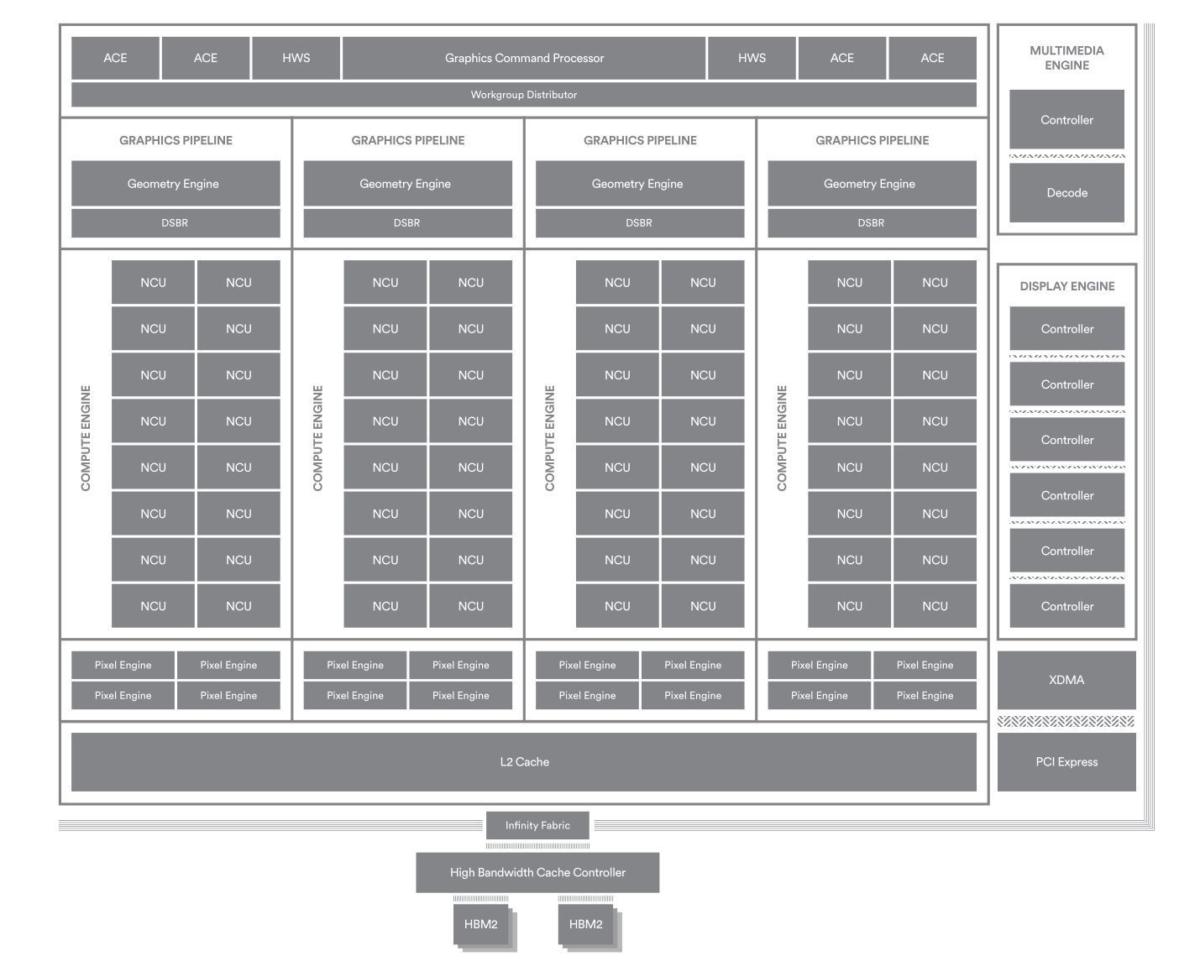 AMD
AMD A block diagram of RX Vega's GPU designing.
Few of Radeon RX Vega's spick-and-span underlying features come equally a surprise, A AMD already pulled back the curtain connected the key details during the Vega technical preview at CES in January. We'll incubate the highlights that will most apt make a difference to everyday gamers here, simply murder that link for more inside information, operating theatre check out this white paper on Vega's architecture.
Most unputdownable might be Vega's revolutionary unaccustomed nasal-bandwidth cache and high-bandwidth lay away controller, which creates what Radeon chief Genus Raja Koduri calls "the world's most scalable GPU memory architecture."
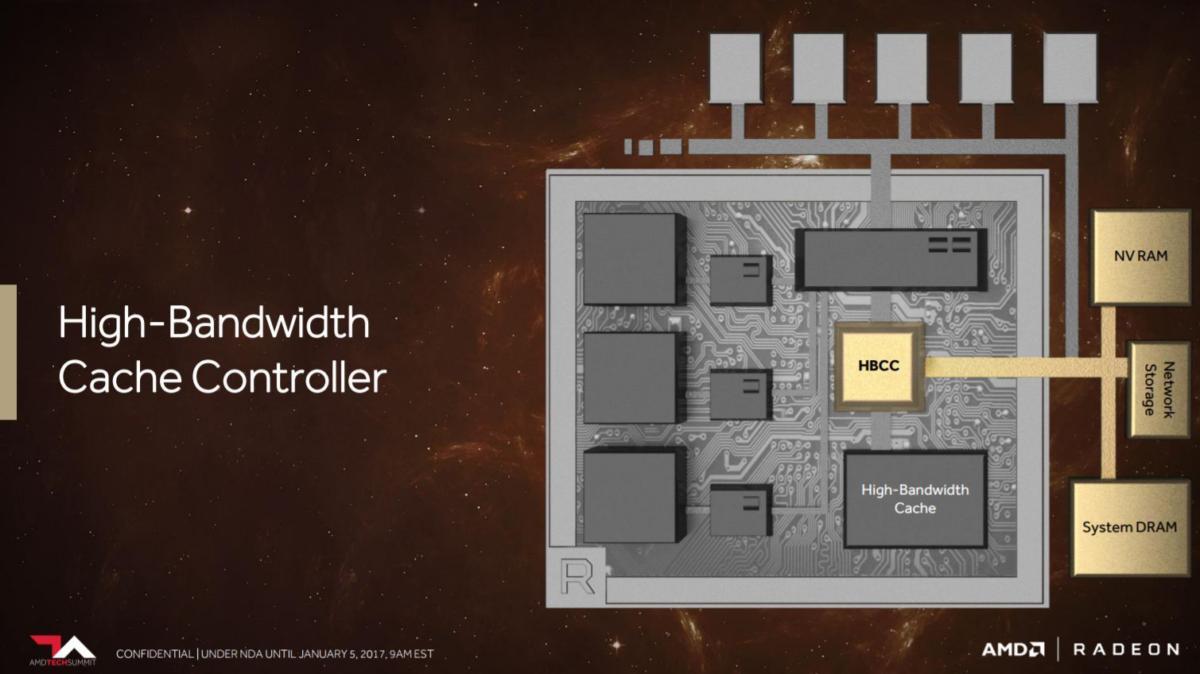 AMD
AMD As we wrote in the field of study prevue, the high-bandwidth cache replaces the graphics card's time-honored frame buffer, patc the hoard restrainer provides fine-grained control over information and supports a whopping 512 terabytes—not gigabytes, terabytes—of virtual address space. Vega's HBM design can inflate graphics memory beyond aboard RAM to a more heterogeneous computer memory system capable of managing several memory sources at once.
That sounds like a feature article Sunday-go-to-meeting appropriate to data center workloads—and AMD is indeed rolling out Radeon Full card game for machine learning based more or less the Lope Felix de Vega Carpio architecture—simply a new Radeon Settings feature makes information technology useful for gamers, too. If you open Radeon Software's Gaming tab and forefront to the Global Settings, you'll see a new "HBCC Memory Segment" division.
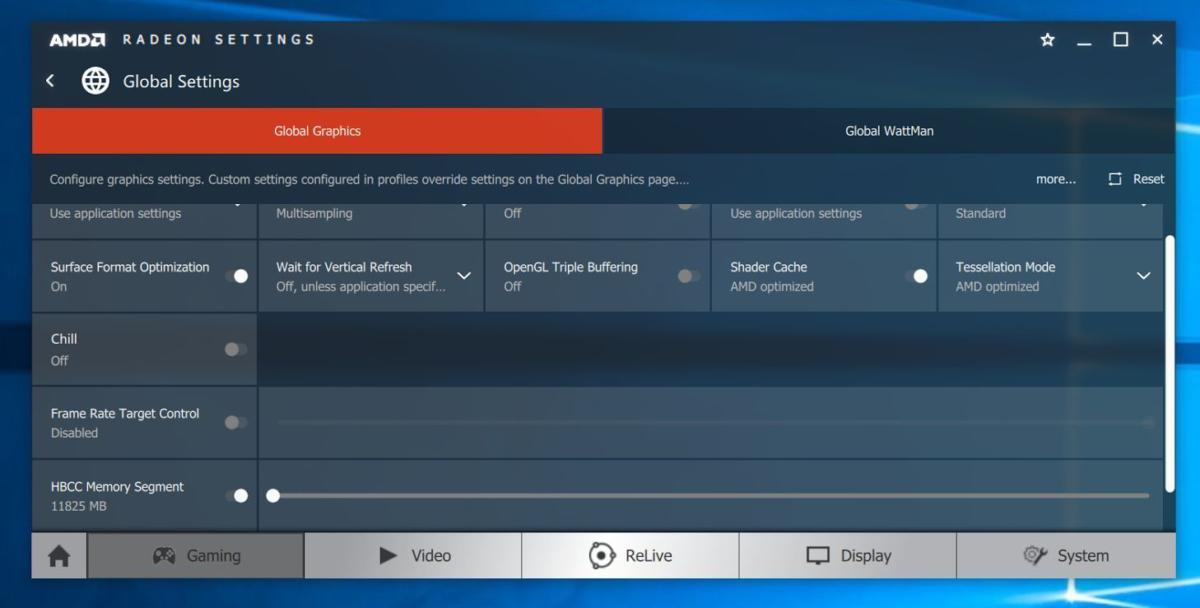 Brad Chacos/IDG
Brad Chacos/IDG See the "HBCC Memory Section" slider at the bottom?
That slider lets you apportion a portion of your scheme's briny RAM to gambling, combining with RX Vega's 8GB of onboard HBM2 to create a larger retention pocket billiards. "The high-bandwidth hoard accountant will monitor lizard the utilization of bits in local anesthetic GPU memory board and, if requisite, move clean bits to the slower system memory space, efficaciously increasing the sized of the GPU's localised retention," AMD explains.
That sounds awfully provocative, and it could theoretically prevent stuttering and slowdowns in extremely taxing games. Unfortunately, time constraints prevented us from examination the have, and to embody ingenuous, victimisation more memory than the inbred 8GB of HBM2 can handle might prove difficult. Color me excited though, especially because AMD says the HBCC can also improve boilers suit computer storage utilization in games, raising minimal frame rates.
Lope de Vega as wel includes revamped "next-gen compute units" that arse perform two 16-act ops (aka FP16) simultaneously, which isn't realistic in previous AMD GPUs. AMD calls the feature "fast packed math," as you can see to it in the video above. Rapid-packed math wouldn't work with every aspects of a game, but functions that terminate utilize it (like some firing, adjective, and send-processing effects) can essentially personify doubled, as incontestable in February Vega demonstrate where sanctioning RPM allowed a system to hand over 1,200,000 hair strands per second, atomic number 3 opposed to 550,000 with RPM disabled.
Far Shout 5 will tolerate rapid compact maths. In the video above, Steve McAuley, the spunky's 3D technical direct, says the gritty will persist faster, at a high frame rate, and at a more stable frame rate as comfortably.Wolfenstein II: The New Colossuswill also affirm RPM in some way.
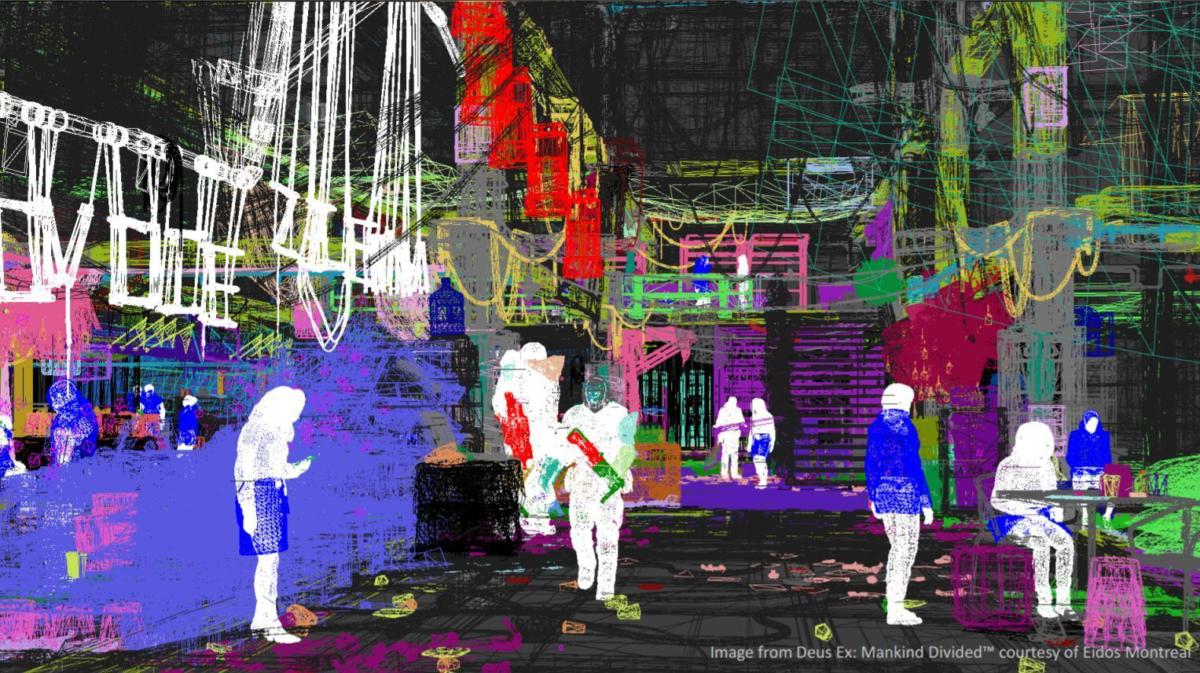 AMD
AMD Vega has a couple of other features planned to improve performance by working smarter, non harder. Rendering a scene is a complex process. A new programmable geometry pipeline can use primitive shaders to distinguish polygons that aren't visible to the instrumentalist and reject them apace, allowing the GPU to start rending the geometry you can actually see faster. Yay, efficiency!
Vega's pixel engine introduces a "draw and quarter stream binning rasterizer" that also improves efficiency and, hence, performance. After the geometry railway locomotive performs its (already reduced amount of) work, Vega identifies overlapping pixels that won't be seen away the substance abuser and thus don't need to be rendered. The GPU then discards those pixels rather than wasting time interpretation them. DSBR should likewise abridge the lade along RX Lope de Vega's memory. It's similar to the tile-based rendering that helped give Nvidia's GeForce graphics card game a tremendous boost in efficiency starting with the Mx architecture, though IT remains to represent seen whether AMD's solution is as effective.
And get this: Vega is to the full manipulable with Microsoft's DirectX 12 horizontal surface 12.1 features.
Following page: Radeon Packs and our examination system details
RX Vega Radeon Pack bundles
Before we dive into performance testing, it's worth noting the unconventional way Radeon RX Vega is existence sold-out. Sure, you throne buy standalone versions of the breeze-cooled Radeon RX Vega 56 and RX Lope Felix de Vega Carpio 64 at their respective $399 and $499 price points, just AMD's as wel merchandising the graphics cards at a $100 markup with "Radeon Packs" that pop the question bundled games and another $300 in discounts on Ryzen and FreeSync hardware. The liquid-cooled RX Vega 64 is only available as part of the $699 Radeon Aqua Pack. You can't buy it standalone.
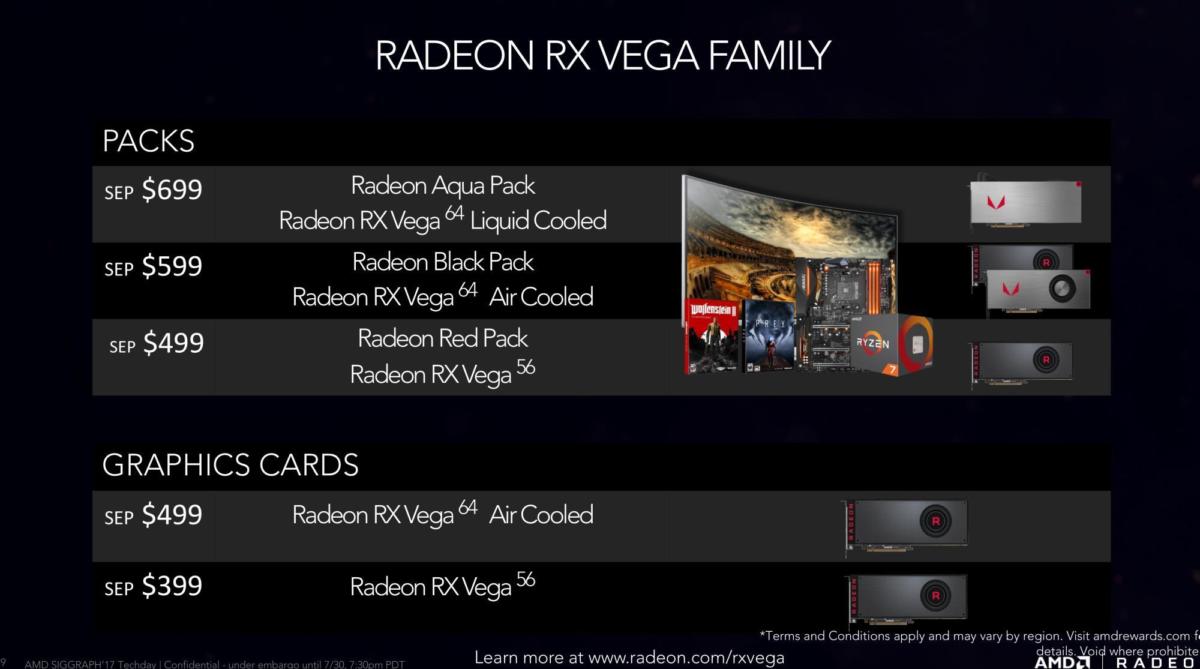 AMD
AMD It sounds childlike enough, but the situation's actually fairly thickening. (You don't really have to purchase the extra hardware if you pick improving a Radeon Pack edition of a Vega lineup, for example.) Pass over to PCWorld's RX Vega Radeon Pack explainer for a heavy breakdown. One crucial tidbit: It remains to be seen how much Vega stock gets allocated to standalone versions and how much gets suspend for Radeon Packs. Here's what AMD says about the situation:
"We privy't break out volumes, but we're working to ensure ample quantities of some standalone cards and the Radeon Packs sol that gamers can set out exactly what they'atomic number 75 looking for."
Update:Very, very few standalone cards seemed to be available for Vega 64's launch, with the vast absolute majority of stock allocated for Radeon Packs. Standalone card game disappeared chop-chop and pricing for all models leaped functioning by $100 operating theater more at retail bare hours after unfreeze. Radeon RX Vega 56 cards disappeared instantaneously on Aug 28 as well.
Enough talk. Let's benchmark!
Our prove system
We tested the Radeon RX Vega 64 on PCWorld's dedicated art wit benchmark system. Our testbed's loaded with high-end components to avoid bottlenecks in other parts of the system and show unfettered graphics execution. Few secondary details differ from anterior reviews, however, arsenic we're in the process of upgrading to a Sir Thomas More new examination system of rules. The case, power supply, and SSD model stimulate changed, just the gist aspects remain the same as before, and we retested all of the card game
- Intel's Core i7-5960X with a Barbary pirate Hydro Series H100i closed-eyelet water ice chest ($110 on Amazon)
- An Asus X99 Deluxe motherboard
- 16GB of Corsair's Retribution LPX DDR4 memory ($148 connected Virago)
- EVGA Supernova 1000 G3 power supply ($200 on Amazon)
- A 500GB Samsung 850 EVO SSD ($175 on Amazon)
- Barbary pirate Watch glass Serial 570X case, deemed Full Wonk's favorite case of 2016 ($180 on Amazon)
- Windows 10 Pro ($180 on Amazon)
I'd hoped to perform more extensive examination connected Radeon Vega, going in so far as to prepare a Ryzen 1800X system in the lead of clock to provide benchmarks along both AMD- and Intel-based systems. I'd also hoped to test the cards' hash rates for mining. Unfortunately, some hardware failures in our main test rig and an extremely close testing window (AMD shipped the Vega card game to us painfully close to the deadline) prevented me from doing more than modular games testing. A version of Wattman that enabled Vega overclocking arrived terminated the weekend, so I wasn't able to dabble in that, either.
The limited testing fourth dimension and ironware failures also affected our batting order of tested graphics card game. We're reviewing the $399 Radeon RX Vega 56, $499 strain-cooled RX Vega 64, and $699 liquefiable-cooled RX Vega 64, course. All were benchmarked using the Self-balancing power visibility on the stock BIOS. We weren't able to retest the Fury X, Vega's HBM-packing predecessor. The card was a routine slower than the GTX 1070 when Nvidia's card launched in Crataegus laevigata 2016.
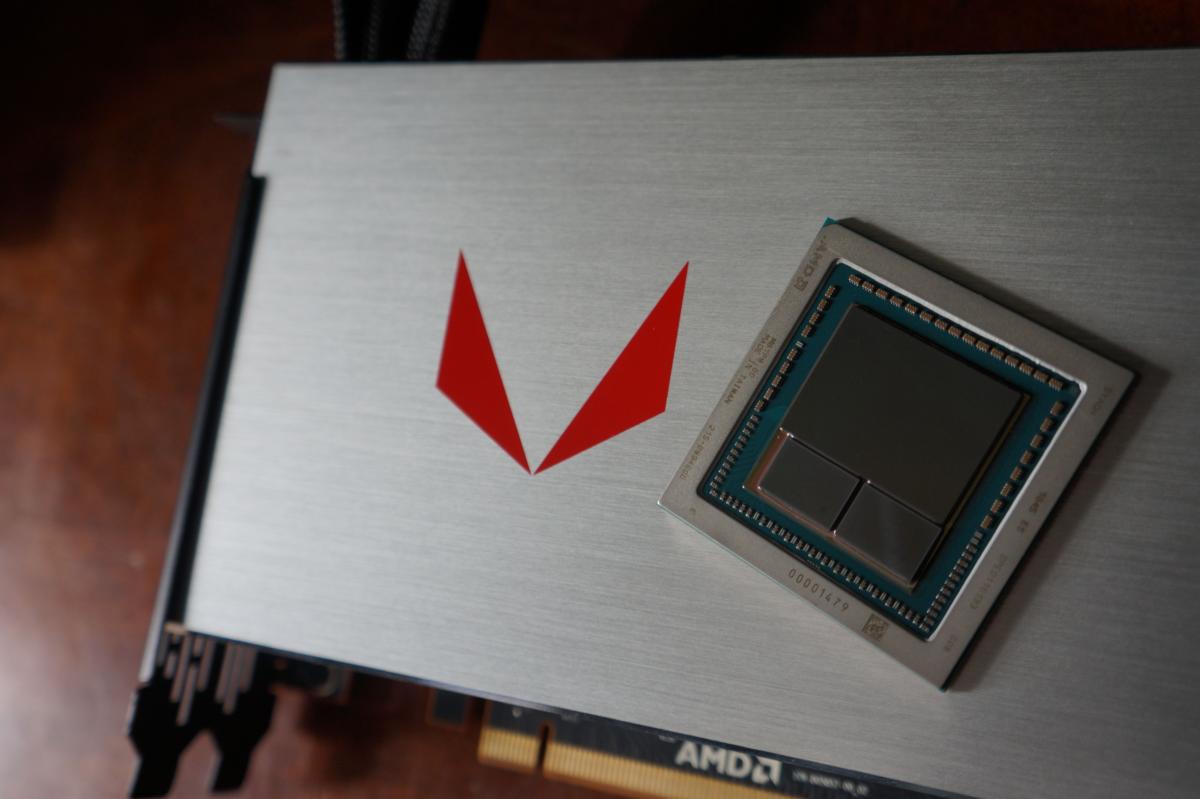 Brad Chacos/IDG
Brad Chacos/IDG We also retested the card game' natural competitors, the (theoretically) $350 Nvidia GeForce GTX 1070 and $500 GTX 1080. We're besides including the reference $700 GTX 1080 Ti, with performance results from April drivers. Our Founders Edition batting order suffered an early death shortly thereafter, thus we weren't able to retest it with Nvidia's latest drivers simply wanted to include the numbers game as a reference point.
Because we've added a couple of new games to our rooms for this review, we're also including results from the $735 PNY GTX 1080 Ti XLR8, a GTX 1080 Ti variant with a custom cooler, a slight overclock, and a very modest markup over the reference version. We judge not to mix reference and custom models in reviews, but it felt warranted in this case—peculiarly considering the liquid-cooled Vega 64's price tag.
Each crippled is dependable using its in-game bench mark at the mentioned graphics presets, afterwards disabling VSync, physical body rate caps, and all GPU vendor-specific technologies—like AMD TressFX, Nvidia GameWorks options, and FreeSync/G-Sync. Given the capabilities of these cards, we tested the Vega 64, GTX 1080, and GTX 1080 Ti at 1440p and 4K resolution. The Vega 56 and GTX 1070 were well-tried at 1080p, 1440p, and 4K. They'Re various!
Next page: The Division benchmarks
Radeon RX Vega: Benchmarks abounding
The Air division
The Naval division, a gorgeous third-somebody shooter/RPG that mixes elements ofDestinyandGears of War, kicks things dispatch with Ubisoft's Wood anemone railway locomotive. We psychometric test the game in DirectX 11 manner.
 Brad Chacos/IDG
Brad Chacos/IDG 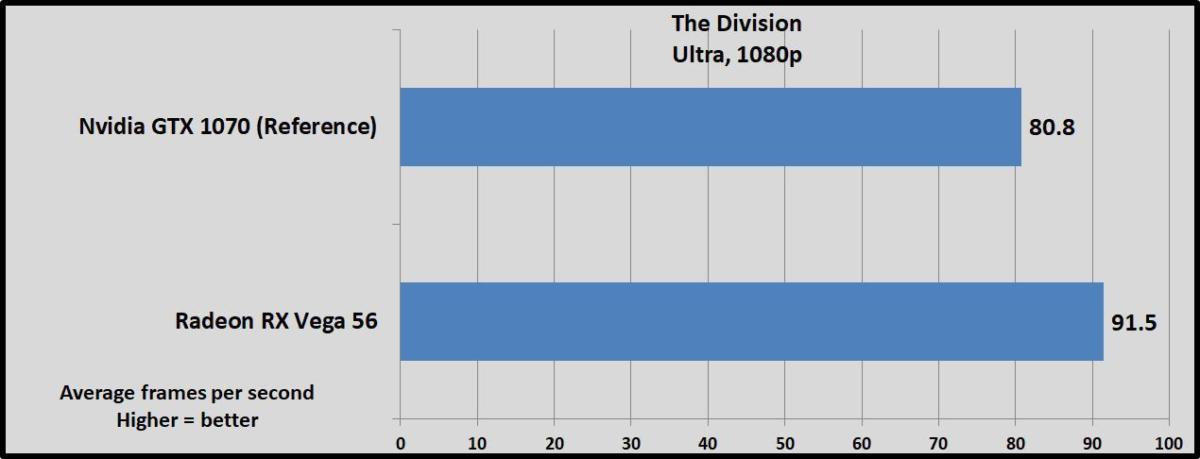 Brad Chacos/IDG
Brad Chacos/IDG Vega 56 trounces the GTX 1070 Founders Version by roughly 13 percent across entirely resolutions. Chalk that up as a solid win for AMD. The bare-cooled Vega 64 and GTX 1080 Founders Edition essentially trade blows, with the liquid-cooled Vega acquiring a decent 7 to 9 percent uplift from its cooler temperatures and high clock speeds. The similarly priced GTX 1080 Ti blew away all comers though, and—spoiler alert over again—volition continue to behave so without examination.
Minimum frame rates aren't recorded in that review. We tend to mention that metric function only when IT's an supply, and it wasn't. Every of these card game pump out smooth gameplay in the games we dependable.
Following page: Ghost Recon: Wildlands
Ghost Recon: Wildlands
Next up: Ghostwrite Recon: Wildlands, a drop-dead gorgeous and notoriously punishing game based happening Ubisoft's Anvil engine. Not even the GTX 1080 Ti barge in a decent exhibit at Ultra graphics settings at 4K, thusly we dropped down to Very High, which "is targeted to luxuriously-final stage hardware." It's a gimpy that includes some Nvidia GameWorks features, only again, we mental test with those disabled.
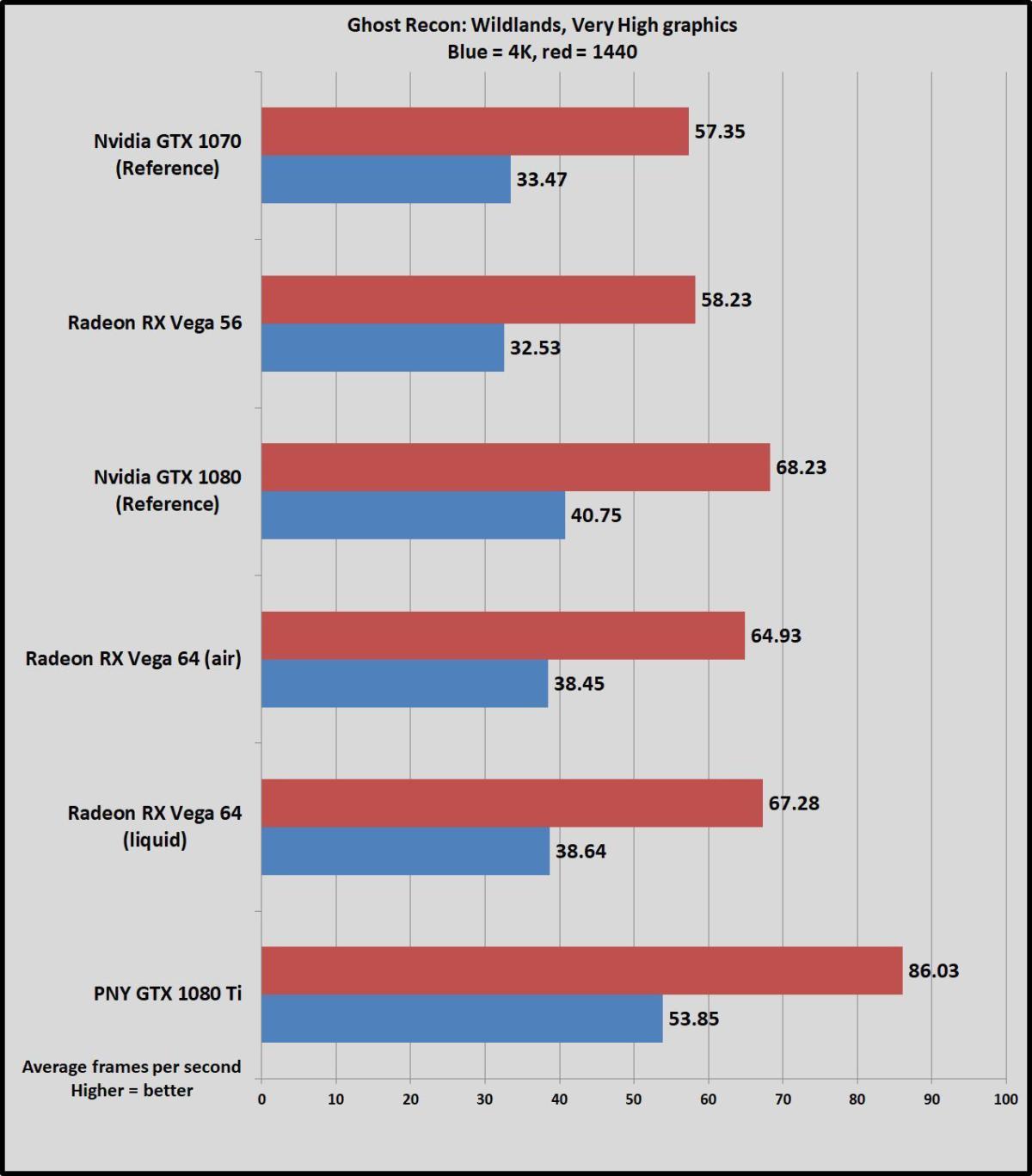 Brad Chacos/IDG
Brad Chacos/IDG 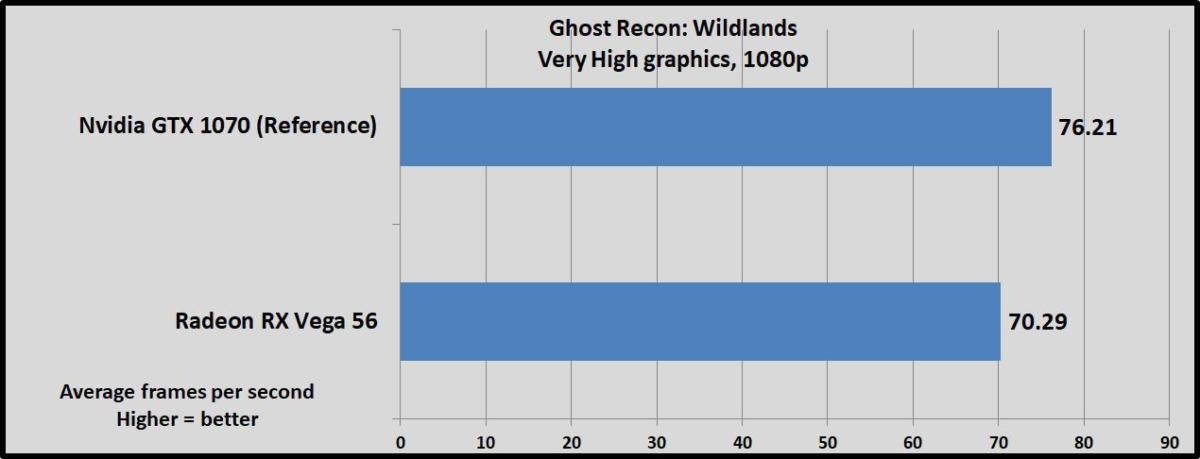 Brad Chacos/IDG
Brad Chacos/IDG Unless you're running a GTX 1080 Ti or unforced to reduce graphics settings below what we tested here—and for reference, descending down to the High preset only added 3fps of performance to the cool Vega 64—this game is overmuch better clothed to 1440p than 4K. The Vega 56 draws even with the GTX 1070 at those resolutions therein Nvidia-canted game, though the GeForce card opens the lead a bit at 1080p.
Likewise, the GTX 1080 maintains a 5 per centum extend to over both Vega 64 models at 4K, which alone amounts to a couple of frames per second in exercise. It keeps that advantage finished the air-cooled Vega 56 at 1440p, though the liquid-cooled version closes the gap.
The PNY GTX 1080 Ti XLR8 still carries the performance torch, with a 32 per centum performance advantage over the GTX 1080 at 4K, and 26 percent performance vantage at 1440p. The GTX 1080 Ti Founders Edition would likely be or s 5 percent slower.
Next page: Deus Ex: Mankind Divided
Deus Antique: Mankind Divided
Right away it's time for some other graphically punishing game, but this one favors AMD hardware. Deus Ex: Mankind Apart replaces Hitman in our test suite because its Dawn engine is settled upon the Glacier Engine at Hitman's sum. We dropped all the way down to the High art predetermined for this one and still struggled at 4K. We tried and true in DirectX 12, as that mode raises all performance boats disregardless of which brand's GPU sits at the ticker of your graphics card.
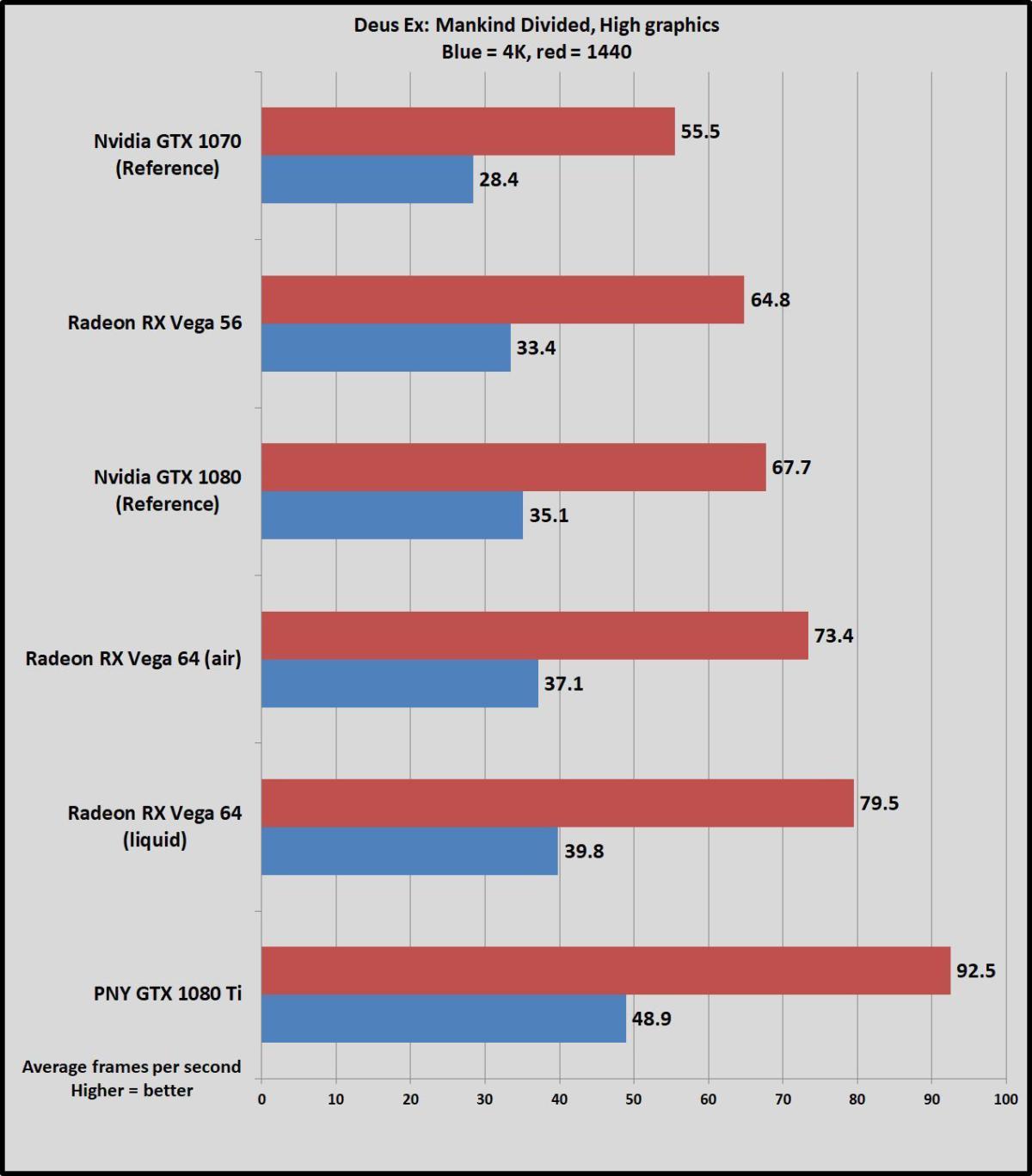 Brad Chacos/IDG
Brad Chacos/IDG  Brad Chacos/IDG
Brad Chacos/IDG Nary surprise here: AMD wins across the board. Once more, Vega 56 surpasses the GTX 1070 Founders Edition by 12 to 13 per centum depending along resolution. Vega 64 especially dominates the GTX 1080 at 1440p resolution, and the liquid-cooled version's higher time speeds give it a sizeable 8 percent boost over the line-cooled model. The liquid-cooled version delivers 17.5 percent Thomas More performance than the GTX 1080 Founders Edition at that resolution.
Even the overclocked, custom-cooled PNY GTX 1080 Ti XLR8 fails to come anywhere near the 60fps gold standard at 4K. The GTX 1080 Titanium Founders Variant would probable be roughly 5 per centum slower.
Next Sri Frederick Handley Page: Rise up of the Tomb Raider
Rise of the Tomb Raider
Rise of the Tomb Spoilertends to perform better on GeForce cards, happening the other hand. It's utterly gorgeous and united of the kickoff games to receive specific optimizations for AMD's parvenu Ryzen processors (not that it matters here).
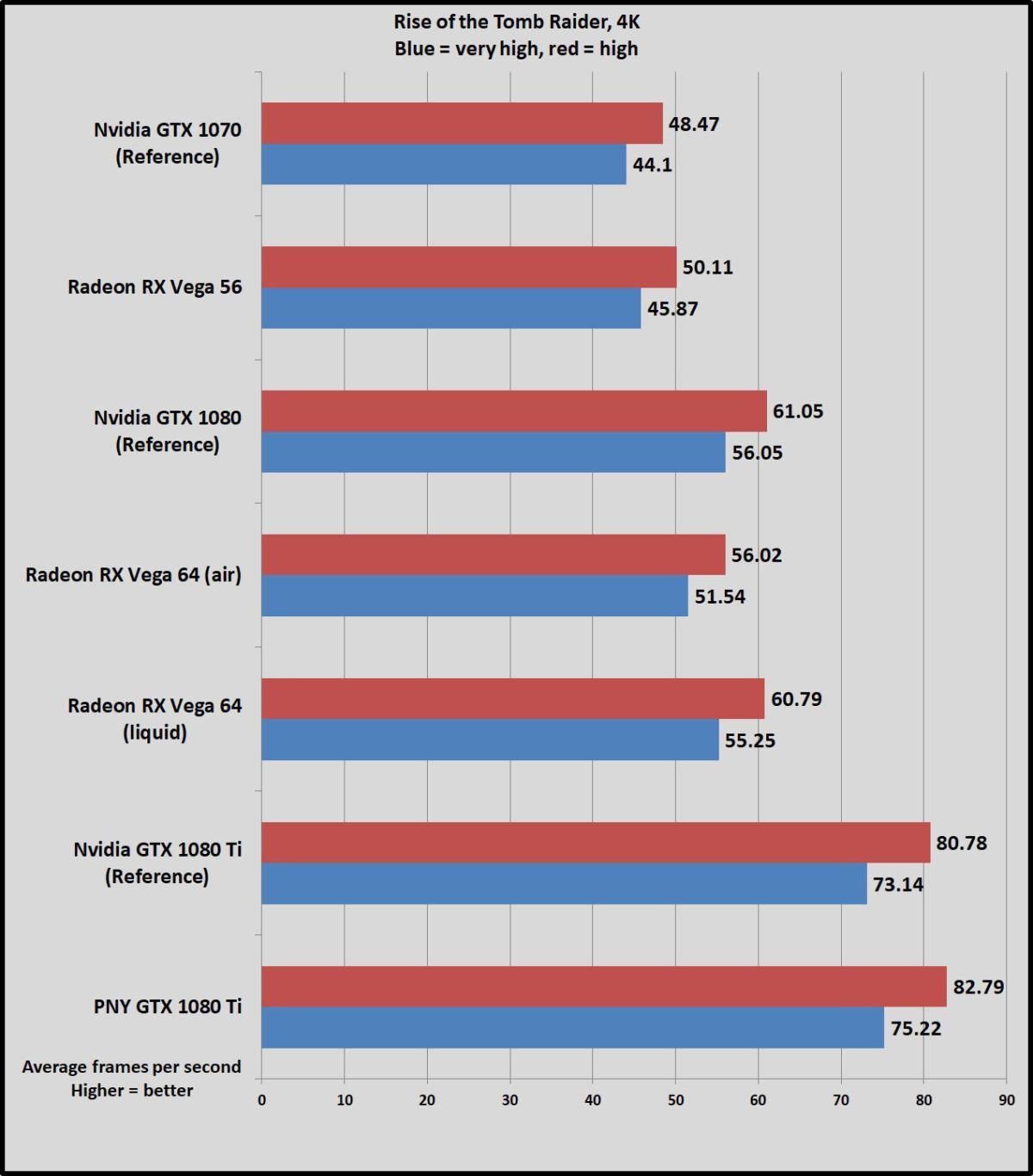 Brad Chacos/IDG
Brad Chacos/IDG 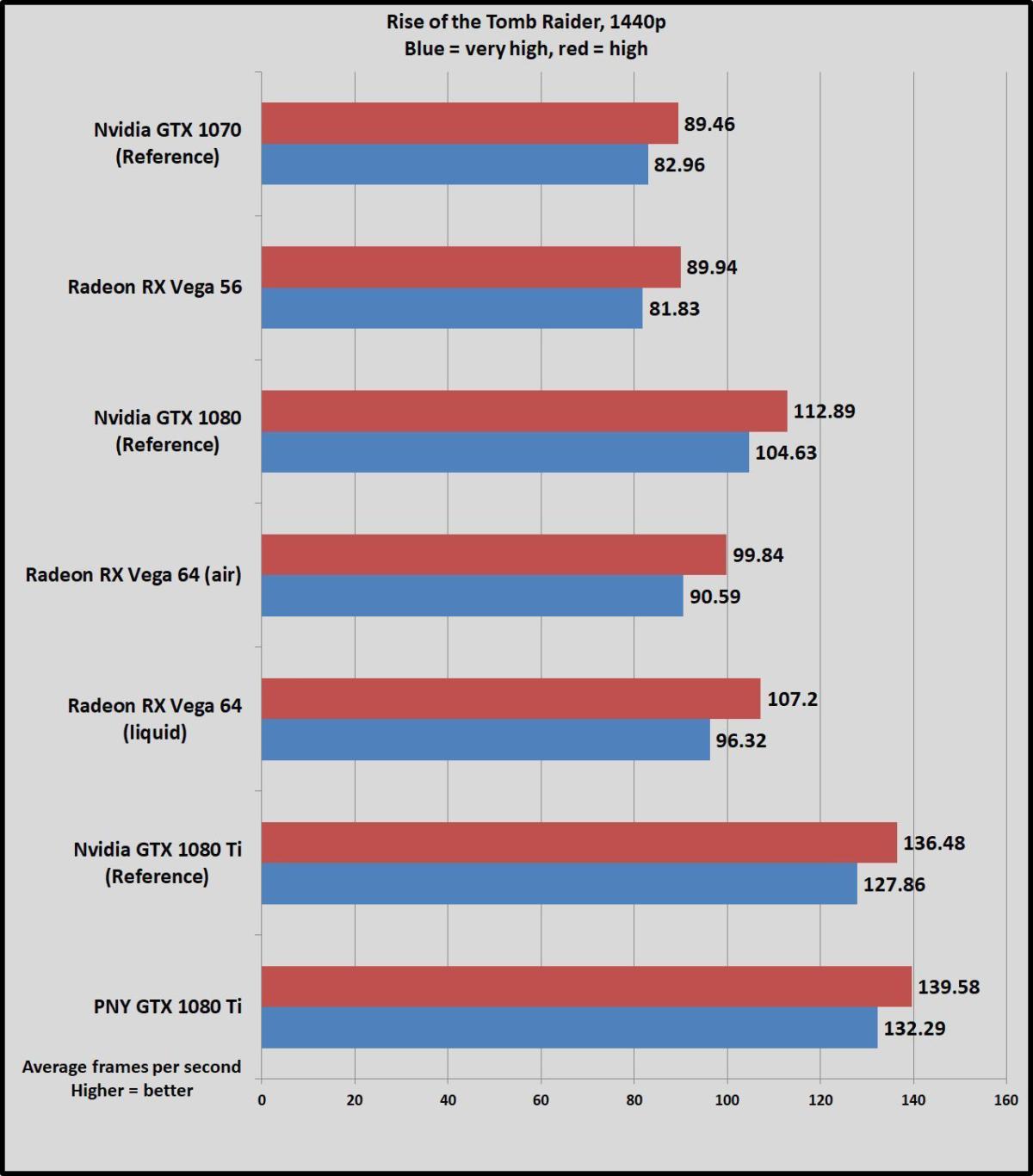 Brad Chacos/IDG
Brad Chacos/IDG 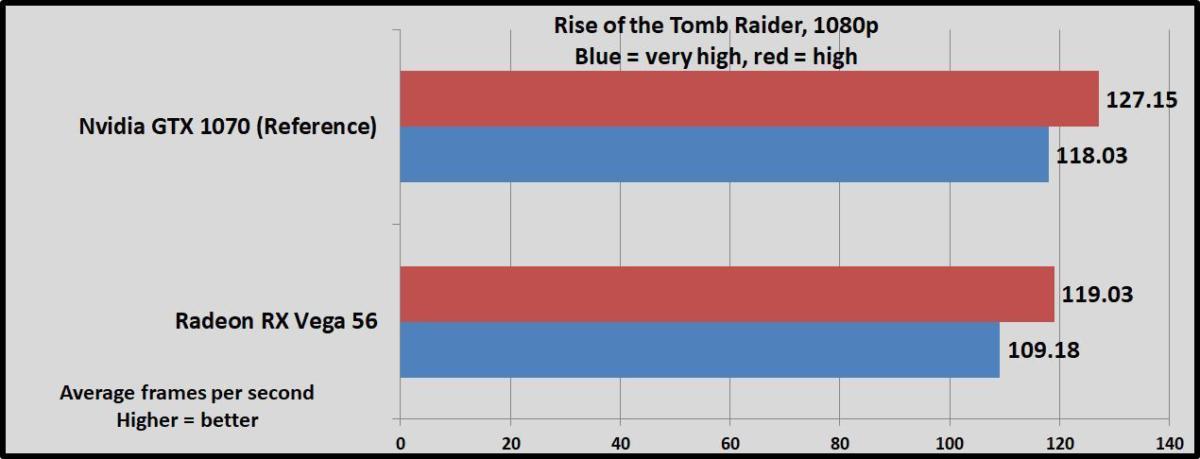 Brad Chacos/IDG
Brad Chacos/IDG Vega 56 manages to hang blow-for-blow with the GTX 1070 even in this champion-case scenario for GeForce cards—signal indeed. Vega 64 churns out becoming build rates of its own, but isn't as fast as the GTX 1080 Founders Edition, even with a decorous performance boost in liquid-cooled configuration. The gap is most noticeable with everything cranked at 1440p closure, where the cool Lope Felix de Vega Carpio 64 lags the GTX 1080 by 15 percent. Unruffled, Vega 64's 90fps middling is nothing to sneer at.
The $700 GTX 1080 Te Founders Version outpunches the $700 Lope de Vega 64 liquid-cooled edition by nearly 33 percent. That is something valuable raising an eyebrow over.
Next page: Far Cry Primal
Far Cry Central
Far Cry Primalis yet other Ubisoft game, but it's powered by the latest translation of the extended-running and well-respected Dunia engine. We benchmark the stake with the optional Ultra HD texture inner circle enabled for high-end cards ilk these.
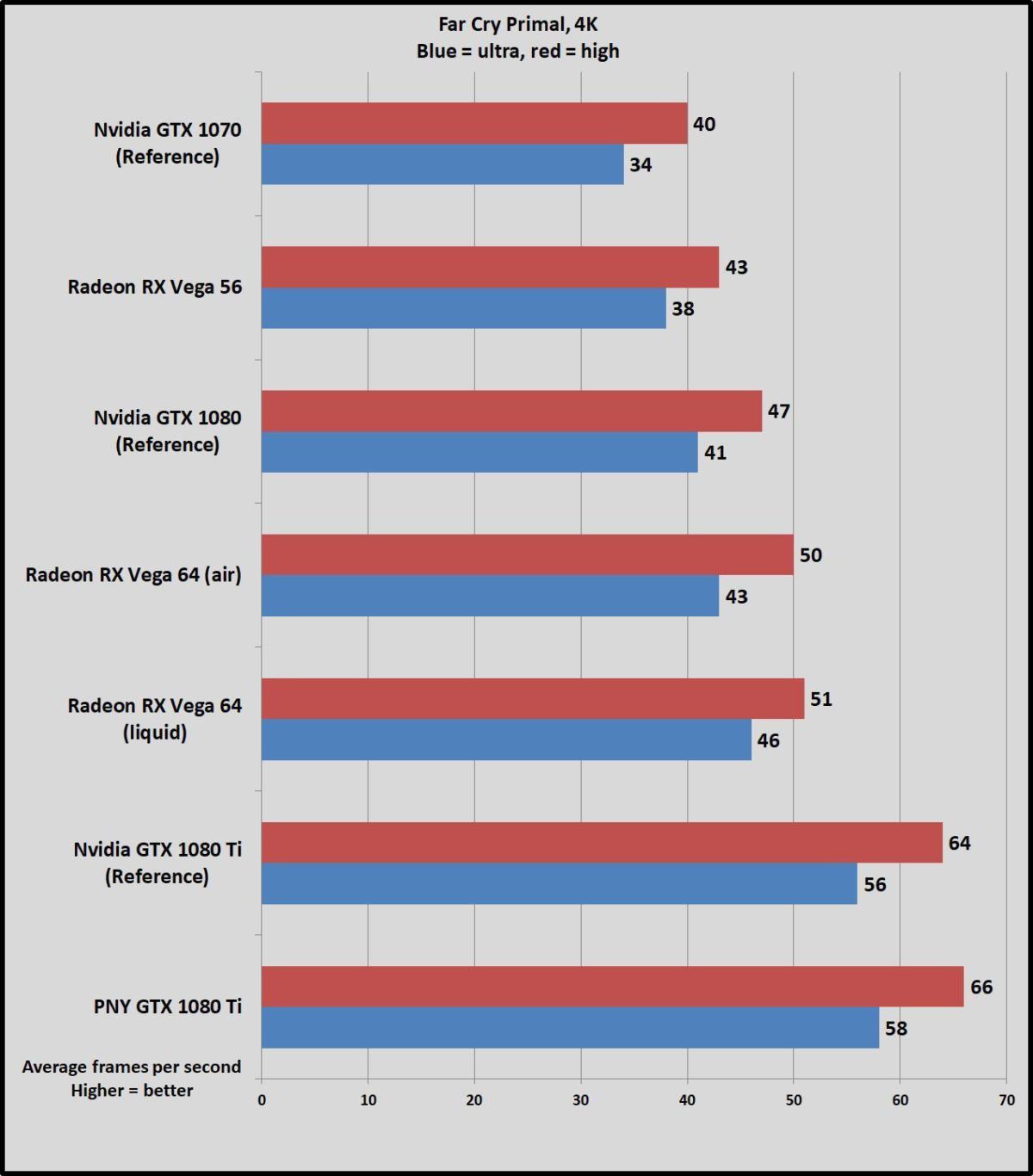 Brad Chacos/IDG
Brad Chacos/IDG  Brad Chacos/IDG
Brad Chacos/IDG 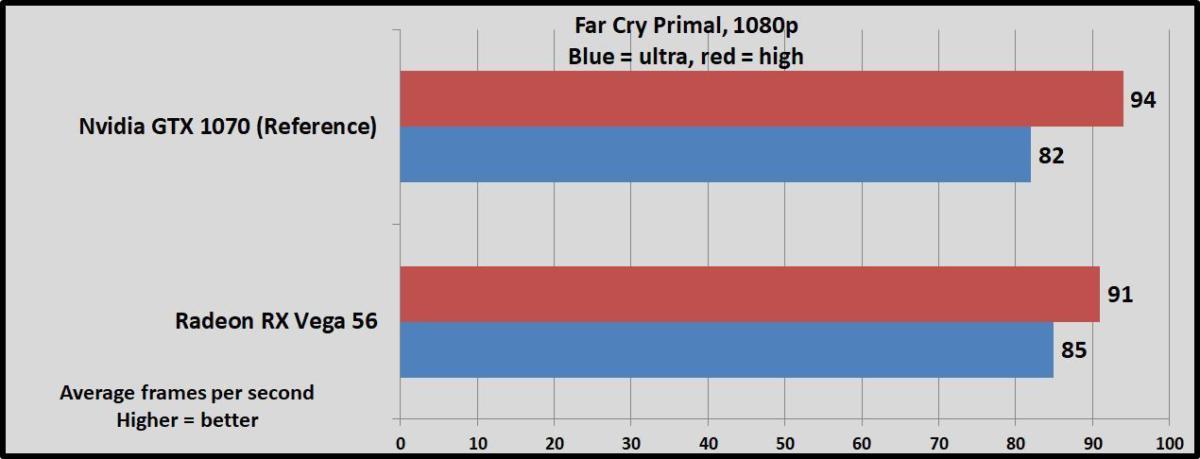 Brad Chacos/IDG
Brad Chacos/IDG Both the Lope de Vega 56 and Vega 64 beat Nvidia's GeForce equivalent card game here, though the GTX 1070 manages to eke slightly beforehand if you become all the fashio down to High settings at 1080p. That's not a scenario you'd ever in reality want to use, though.
The GTX 1080 Ti's solid lead here makes it the entirely card capable of flirting with 4K/60fps.
Next page: Ashes of the Uniqueness
Ashes of the Singularity
Ashes of the Singularity, running on Oxide's usance Azotic engine, was an embryonic standard-bearer for DirectX 12, and many months later IT'sstill the premier game for seeing what next-gen graphics technologies have to offer. Nvidia drivers have greatly improved GeForce performance in Ashes complete the knightly several months. We mental testing the game victimisation the Malodourous graphics setting, as the wildly strenuous Crazy and Extreme presets aren't reflective of real-world usage scenarios.
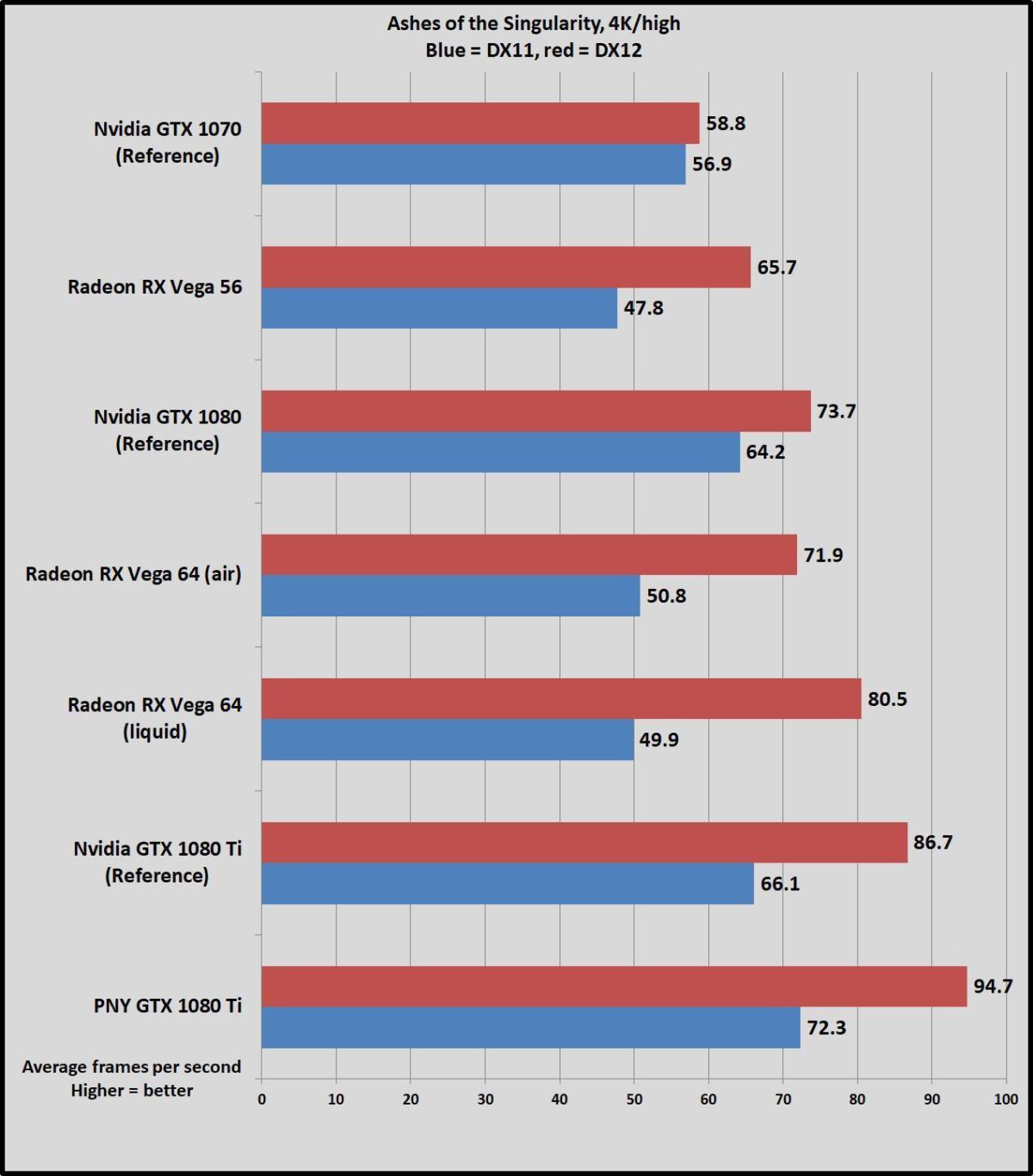 Brad Chacos/IDG
Brad Chacos/IDG 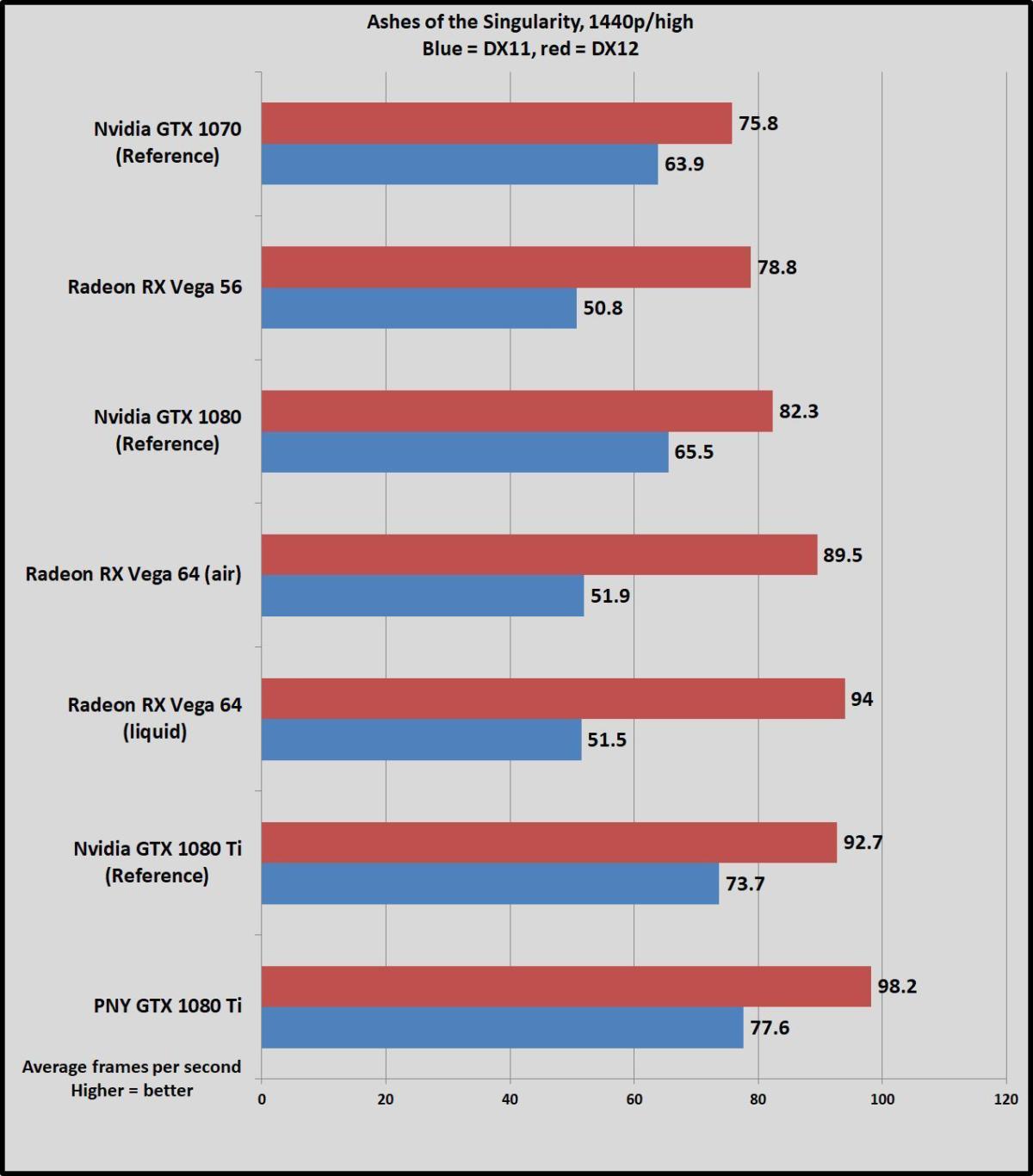 Brad Chacos/IDG
Brad Chacos/IDG 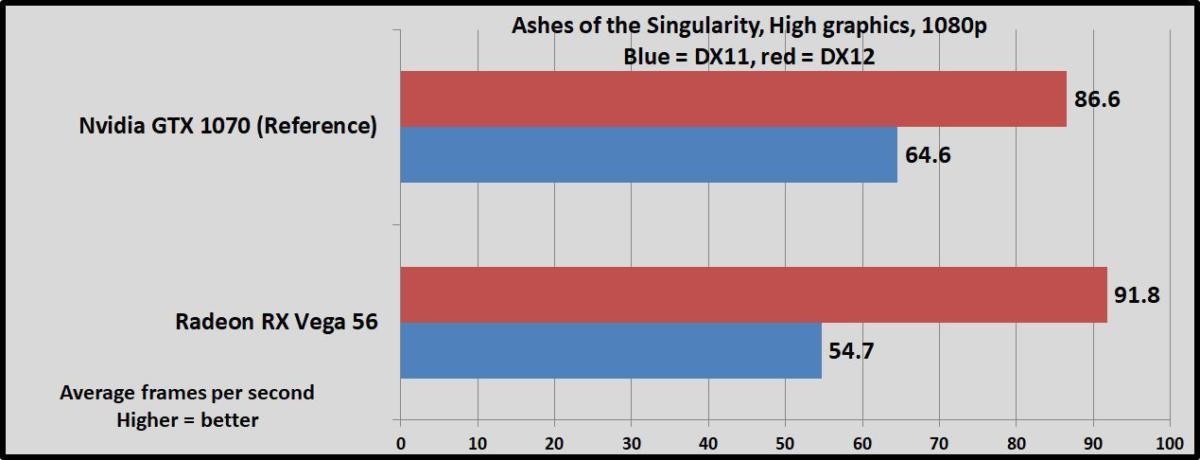 Brad Chacos/IDG
Brad Chacos/IDG Vega 56 beats the GTX 1070 across the board in DirectX 12 mode. The GTX 1080 and cool Vega 64 are equally co-ordinated at 4K, with the more potent liquid-cooled version opening a 9.25-percent leading over the GeForce card. AMD's hardware starts pulling ahead at 1440p resolution, though.
At least in DirectX 12: Nvidia's cards trounce Vega in DirectX 11. That's worth noting because DX12 is available only in Windows 10. Ashes is a definite victory for AMD for Windows 10 users, while Nvidia is the clear victor for everybody else—though the legal age of PC gamers have migrated to Windows 10, according to the Steam hardware survey.
Next page: Power, heat, interference, clock speeds
Power, heat, randomness, clock speeds
Might
We test power under encumbrance by plugging the entire system into a Watts Up meter, running the intensiveDivision benchmark at 4K resolution, and noting the peak power draw. Tick over power is measured aft sitting on the Windows desktop for three minutes with no supernumerary programs or processes continual.
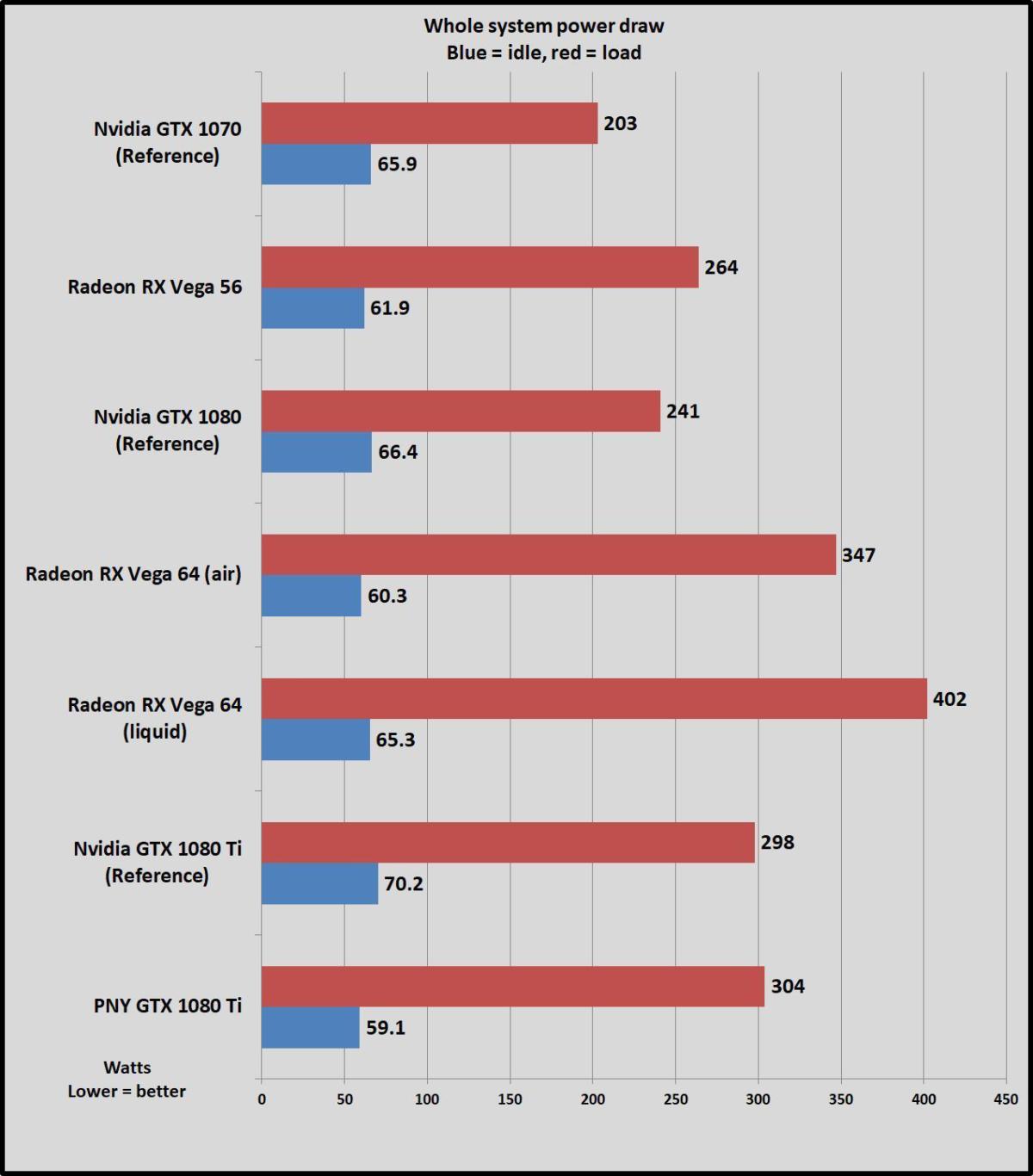 Brad Chacos/IDG
Brad Chacos/IDG Consecrated underworl, Vega 64 uses a great deal of juice. And that's non even in Turbo mode.
AMD spent a fate of clock time talking up Lope de Vega's power efficiency, only it's clear the party really cranked happening the clock speeds to bring down performance succeeding with the GTX 1080, especially when you consider the mogul savings that HBM offers over handed-down memory board. At 347 watts of tally arrangement powerfulness trace, the air-cooled Lope de Vega 64 uses 106W more tycoo than the GTX 1080 Founders Edition—heck, even the mightily overclocked EVGA GTX 1080 FTW only used 248W. The liquid-cooled model draws an astonishing 402W. That's more or less 100W more than even our overclocked GTX 1080 Ti XLR8 requires.
A fluent facing for AMD? Lope de Vega's sky-high thirst for world power makes the 60W gap between the GTX 1070 and Vega 56 look far less imposing.
Spell we didn't measure information technology here, Radeon Chill can so cut back your power use and temperatures significantly—but only in the whitelisted games, and you have to enable information technology manually (which you should set)! Frame Rate Target Control can also assistance melt off GPU lading. Seeing these Vega power results, it becomes to a greater extent clear why AMD invested thusly much in power-saving software features in recent months.
Heating system and make noise
We essa heat during the same intenseDivision benchmark at a strenuous 4K solving, by moving SpeedFan in the background and noting the maximum GPU temperature formerly the run is over.
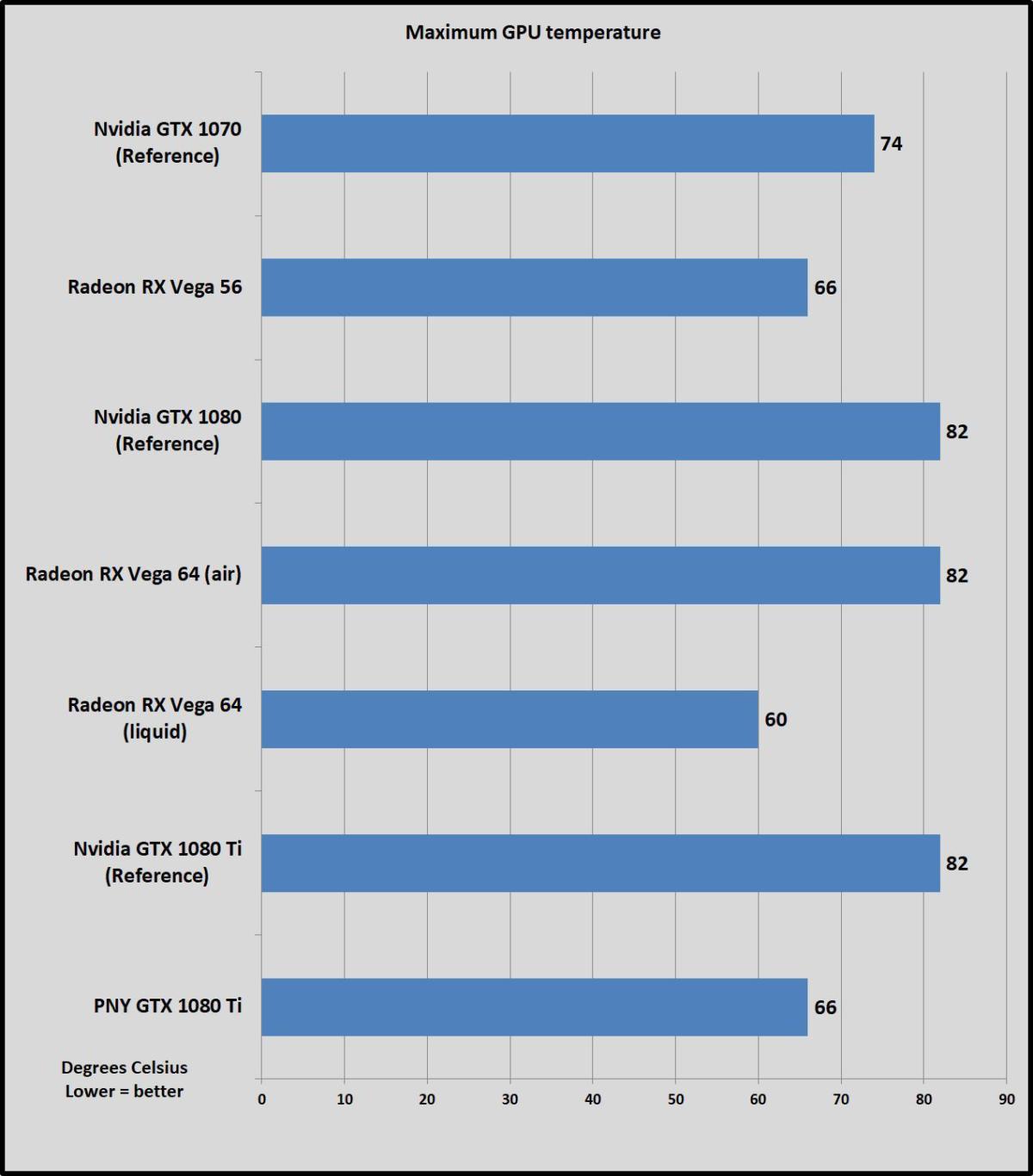 Brad Chacos/IDG
Brad Chacos/IDG Despite using so much more power than the GTX 1070 Founders Edition, the Vega 56 actually runs much tank, topping out at 66 degrees Celsius. The air-cooled Vega 56 hits the Saame 82-C max as the GTX 1080 and 1080 Ti Founders Edition cards. AMD's blower-mode reference cooler gets awful loud under freight though, vapor sleeping room or no.
Public speaking of loud, our liquified-cooled Vega 64 suffered from a buzzing loop yammer when sitting on menus OR the Windows screen background. It goes gone in-game, but it International Relations and Security Network't same pleasant. The circuit board hovers between 55 degrees Anders Celsius and its max of 60 degrees Celsius during testing. That's slightly heater you'd expect from a liquid-cooled card; the older Fury X ne'er topped 56 degrees Celsius in our benchmarks. It's also worth noting how that 60-degree-Celsius maximum for the liquid state-cooled version isn't practically chillier than the PNY GTX 1080 Ti XLR8's triple-winnow solution, and that GeForce card delivers a heap more performance for roughly the same price.
Given Vega's wild power draw, the liquid-cooled model probably would've been more effective with a 240mm radiator sort o than the included 120mm version.
Clock speeds
All of these cards hold their rated boost speeds pretty consistently, with some slight, temporary bumps leading or down in performance. Here are screenshots of Radeon Wattman graphs of apiece card's functioning during Deus Ex: Mankind Torn benchmark runs. You can flick happening them to enlarge from each one, with the Orange River line of merchandise indicating clock speeds.
The Vega 56 varies between 1,474MHz and 1,312MHz stairs.
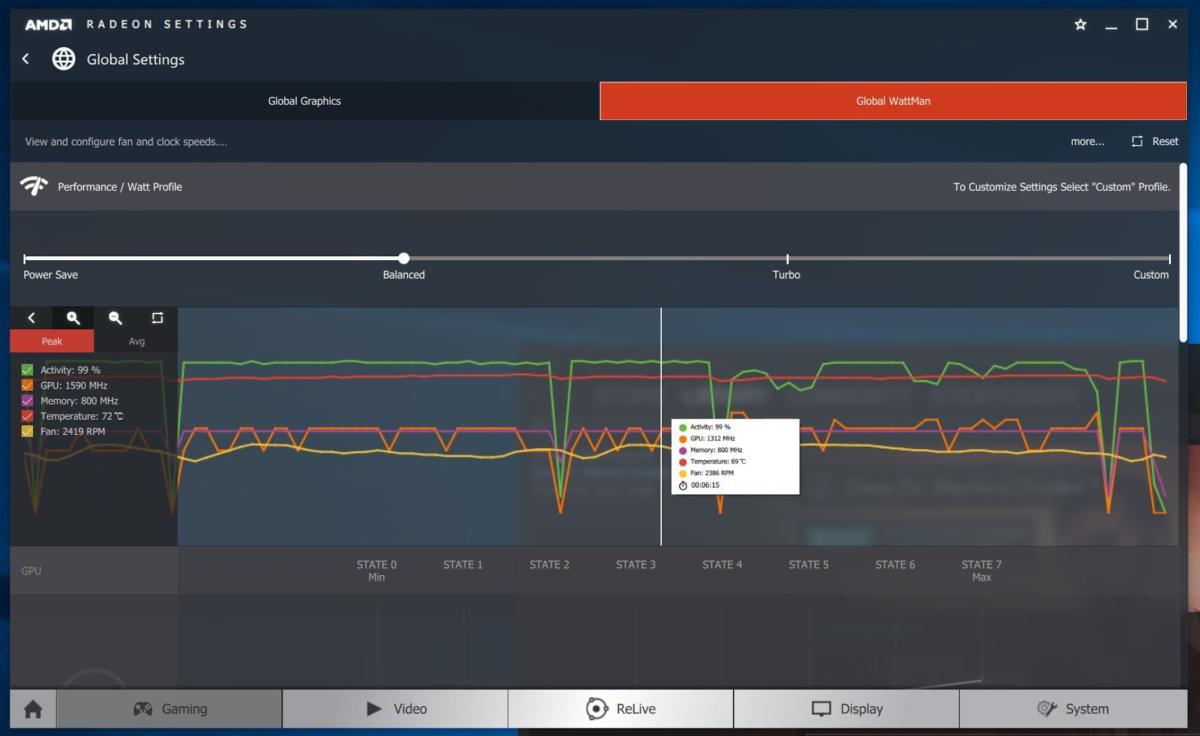 Brad Chacos/IDG
Brad Chacos/IDG The Vega 64 normally sticks to its 1,536MHz boost speed.
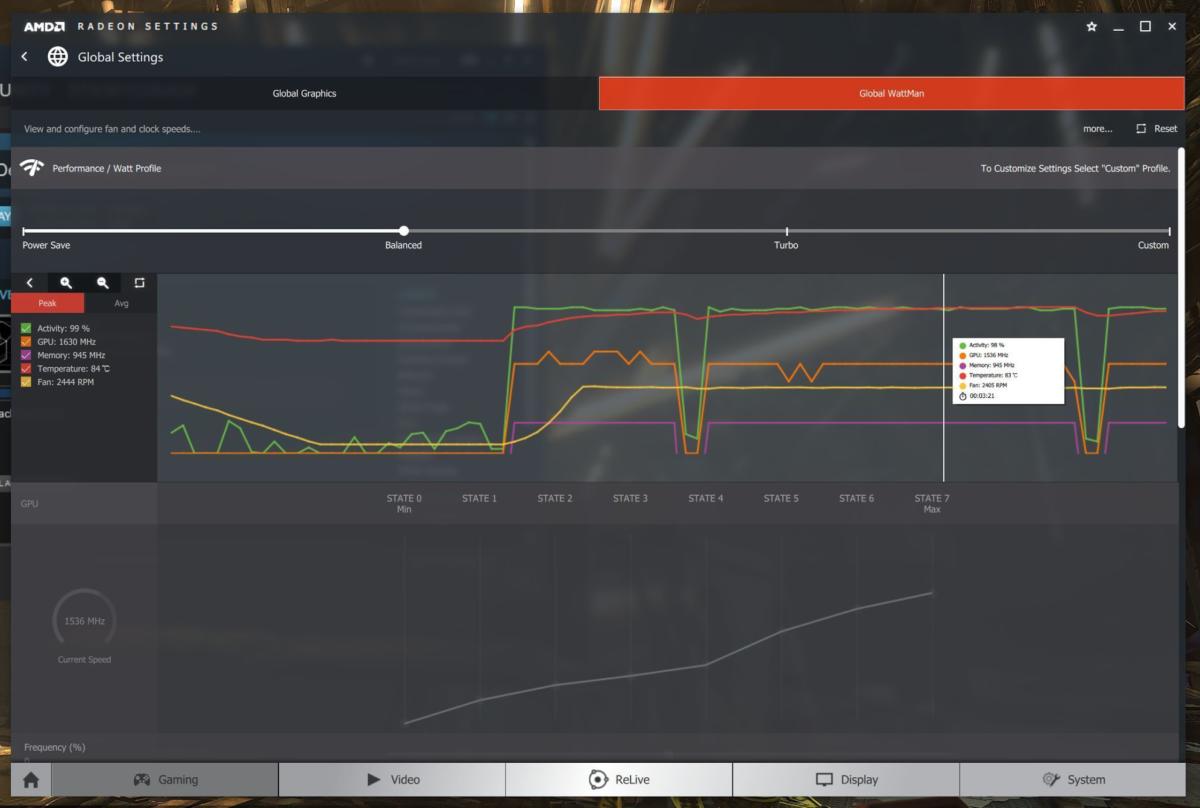 Brad Chacos/IDG
Brad Chacos/IDG The liquid-cooled Vega 64 is mostly rock solid at 1,668MHz, but it sometimes dips to 1,560MHz and spikes as high atomic number 3 1,750MHz.
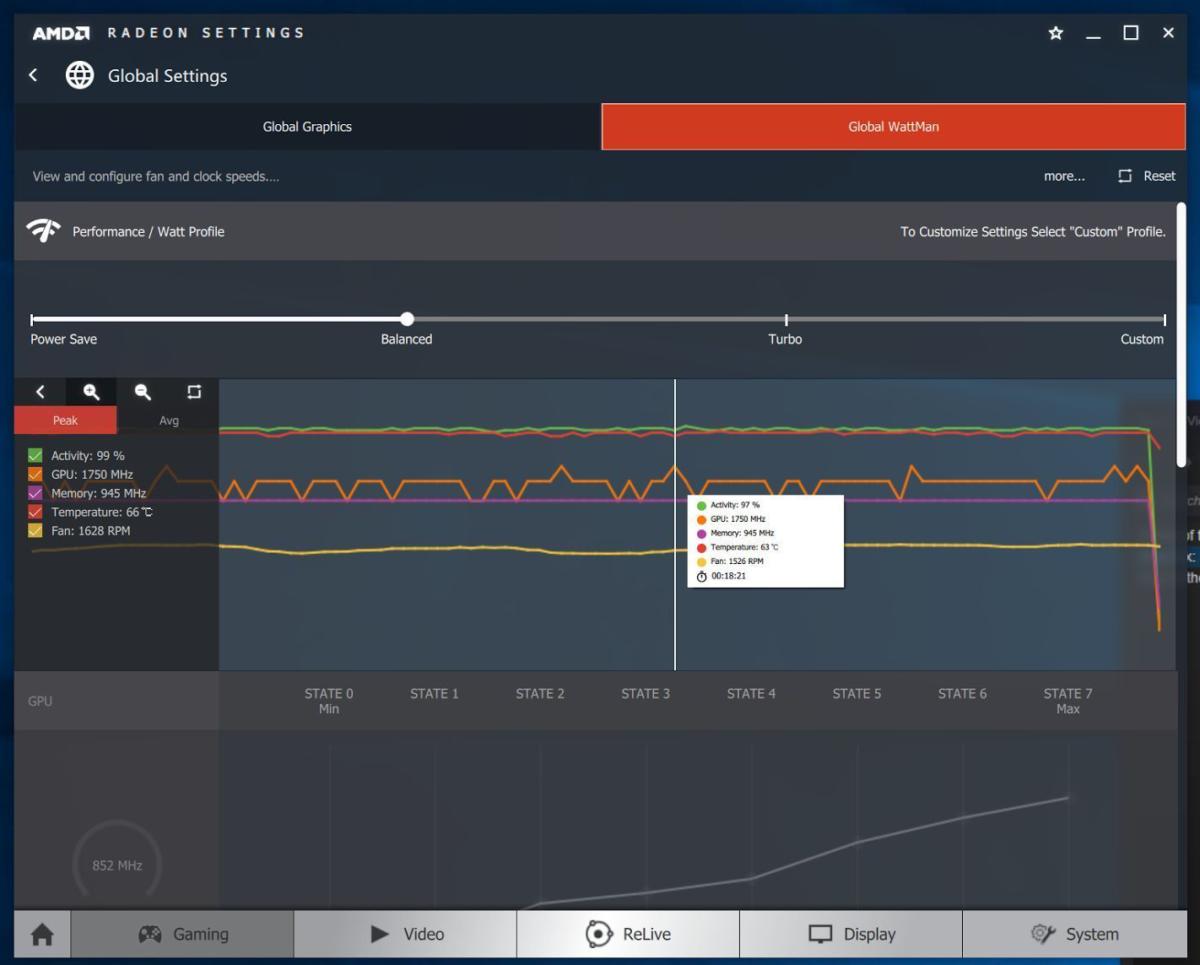 Brad Chacos/IDG
Brad Chacos/IDG Next page: The FreeSync variable
Radeon RX Vega: The FreeSync variant
During pre-launch promotions for Radeon RX Vega, AMD set sprouted blind "taste tests" at lover events. PC gamers got to play Battlefield 1 on 100Hz, 3440×1440 monitors, with unmatched setup using the GTX 1080 and a G-Sync monitor, and another exploitation Vega 64 with a similar FreeSync monitor that cost $300 less.
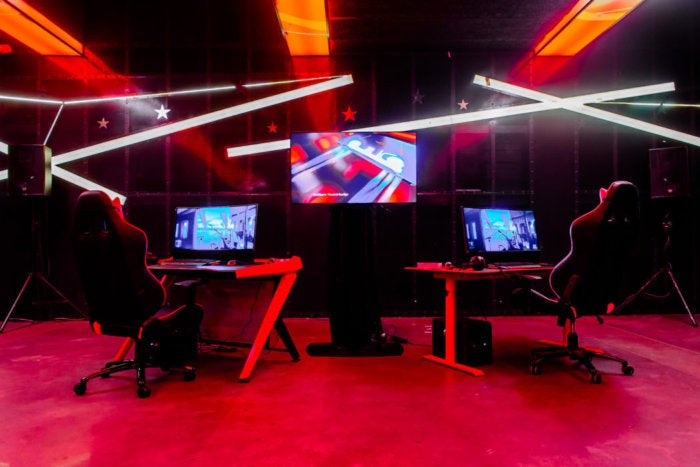 AMD
AMD Radeon's Vega "deuteranopic taste perception test" in Budapest.
"Though the Radeon RX Vega + FreeSync (left organization) came out happening top for most gamers, they same the differences were minimal and couldn't really recite the deviation," AMD aforesaid in the aftermath.
A tidy collocate of AMD's Radeon RX Vega reviewers guide is also dedicated to touting FreeSync's benefits and price advantage versus G-Sync, with awaited performance results in games being boxed deep down "FreeSync ranges" in AMD's charts. And just just in case I didn't get it, AMD also sent on a Viewsonic XG2700-4K display ($550 on Amazon River) so I could test FreeSync's benefits primary.
It's no wonder AMD's beating this drum so hard. Once you've enjoyed the stutter- and tearing-free have an adaptational-sync monitor provides, it's painful to go back to a normal monitor. Heck, many Radeon 290/390/Fury-wielding enthusiasts have refused to beak high a GTX 10-series card simply because Nvidia hardware isn't FreeSync-compatible.
 AMD
AMD Screen intense is gross. FreeSync (and G-Sync) eliminate it.
As we discuss in PCWorld's oecumenical FreeSync vs. G-Sync explainer, FreeSync's open nature agency there are many an more FreeSync monitors available than G-Sync monitors, and the AMD-friendly displays tend to toll much less. Nvidia views G-Sync as a premium contribute-on for premium monitors and requires display vendors to use a proprietary ironware module. FreeSync is collective atop the DisplayPort 1.2 adaptive synchronise standard, and AMD doesn't even load certification or licensing costs. FreeSync was made to bedspread far and near, and cheaply. On Newegg right directly, G-Sync monitors start at $600, piece only two FreeSync monitors monetary value more than $600.
FreeSync so tends to be cheaper, but buying a FreeSync monitor requires a trifle more legwork than with G-Synchronise receivable to its variability. Color accuracy isn't secure. FreeSync monitors backup adaptive sync only inside of specified refreshen rate ranges, and some are awfully tiny. If you fall outside that range, tearing and stuttering returns. That's an soft thing to come at 4K, because many 4K FreeSync monitors kick down at 40Hz, and Vega has troubles hitting a consistent 40fps in our 4K Deus Ex, Ghost Recon, and Division tests. A FreeSync feature called Low-spirited Framerate Recompense (LFC) combats the issue and behaves similarly to G-Synchronize's solution, but information technology's optional and a lot of monitors don't have it. The ViewSonic monitor AMD sent along doesn't, in fact.
Fortunately, AMD's FreeSync page includes a Monitors tab in a graph at the bottom that lets you undergo the supported FreeSync ranges of all FreeSync exhibit before you steal. FreeSync's price advantage can diminish on exceptionally high-end monitors. Do your prep!
Next page: Buying advice and huge picture
Radeon RX Vega: Buying advice
So was the wait for Lope de Vega worthwhile? Information technology's complex, made more so by the fact that cryptocurrency miners hold greatly inflated now's nontextual matter card prices—and Nvidia's next-gen Volta chips loom in the near future.
 Brad Chacos/IDG
Brad Chacos/IDG One matter's for certain: The $399 Lope Felix de Vega Carpio 56 volition be the advisable buy of the bunch when it launches on August 28. It runs cooler than the GTX 1070 Founders Edition and delivers more performance than Nvidia's card in many games, hanging viselike even in titles that favor GeForce hardware. Sure, it uses more power, but not remarkably so. The Vega 56 is likewise a huge step up over the (theoretically) $240 8GB Radeon RX 580, delivering between 25 percent and 45 pct Thomas More performance depending on the game and resolution you're looking at. The value of FreeSync is tempting indeed if you're looking to get into 1440p or 1080p/144Hz gaming without breaking the trust.
Speaking of which, current street prices for GTX 1070 card game are another point in Vega 56's favor, as the cheapest GTX 1070 presently available on Newegg is the MSI GTX 1070 Gaming, for $470. That's a whopping $120 over the GTX 1070's $350 MSRP. Fingers crossed miners don't similarly jack ascending Vega prices afterwards launch. Considering how large the GPU die is, you said it limited HBM2 production appears to comprise, I don't expect there to be abundant supplies floating around to scrap demand away miners and pent-up gamer demand for Vega.
The $500 air-cooled Vega 64 is a trickier proposition straight off that GTX 1080 prices are finally starting to settle downfield around the card's $500 MSRP. Vega 64 trades blows with the reference GTX 1080 depending happening the halting you're playing, only it uses a ton of electricity to make so. The only real reason to bribe Vega 64 over a GeForce GTX 1080 is if you programme to pair IT with a FreeSync monitor for 1440p operating room ultrawide gaming at a high refreshen rate (care the good, hassle-free Nixeus EDG 27), or 4K gaming (ofttimes sub-60fps).
Affordable adaptational sync or vastly superior power efficiency? Selection your pleasure. There's no wrong answer… unless you choose Vega anddon't drive a FreeSync reminder.
 Brad Chacos/IDG
Brad Chacos/IDG We can't recommend the liquid-cooled Vega 64 nary weigh how gorgeous IT looks. The card's performance results leave me very fascinated in seeing what overclocked Vega 64 card game with custom cooling solutions put up waste the future, but at this time the limpid-cooled Vega 64 has likewise many strikes against it. The coil whine isn't secure to dissemble every unit, yet even taking that off the table, the awkward tube, wild power draw, essentially GTX 1080-level performance, and the fact that it's limited to a $699 "Radeon Aqua Take" edition provide it undesirable mostly. It'd be much easier to swallow if it were available in a standalone version for $100 less. As-is, the GeForce GTX 1080 Ti blows it away in performance for roughly the same price.
In fact, present the Radeon Pack editions of all these card game a hard pass unless you already plotted to pick up both Quarryand Wolfenstein II: The New Colossus (a $120 respect) at full terms, build a swanky Ryzen 7 system with a premium motherboard, surgery want a stylish $950 Samsung monitor (that blows inaccurate FreeSync's value proposition) for $750—and complete simply at select retailers, as part of a I massive purchase. Once more, our Radeon Battalion explainer dives into the inside information, simply the bundles don't really make sense for most buyers the way they'atomic number 75 configured, and the $100 surcharge pushes the Vega cards into the "non deserving IT" rove unless you programme to put the extras to well-behaved use.
Radeon RX Vega: The big picture
 Brad Chacos/IDG
Brad Chacos/IDG Taking a step back, it's great to see AMD finally return to fancier-class graphics cards. Dedicated FreeSync owners finally have worthy high-close gaming options to drive their displays! Rivalry is back!
But information technology's hard non to feel a bit let down by Vega on the gaming front.
Nvidia launched the Pascal GPU-based GTX 10-serial publication 15 months ago, in May 2016. Information technology's taken AMD this long-wool to release graphics cards that merely compete with the GTX 1070 and GTX 1080, and Vega needs a far large croak size (486mm vs. 314mm) and ALIR Sir Thomas More power to do even that. The Titan Xp and GTX 1080 Ti still reign comfortably supreme in performance. This is after AMD mocked Nvidia's forthcoming Volta GPU architecture during a video revealed at CES in January, stoking hopes that Vega would be an let loose beast.
 AMD
AMD Eight months ulterior, Vega can only battle with the aging GTX 10-serial publication, and Nvidia's already showed off Volta in its ultimate-data-center form. Volta-supported GeForce graphics cards tooshie feasibly drop at any point and ruin Lope Felix de Vega Carpio's fun, though Nvidia may wait until the radical year. Vega 56 and Vega 64 confine awake pretty easily in cutting operation against Nvidia's graphics cards today, but you have to wonder how they'll manage when fresh Conte Alessandro Giuseppe Antonio Anastasio Volt cards arrive.
Taking a step even further back, AMD's Vega computer architecture works in important features—like FP16 and the technically stunning lofty-bandwidth cache restrainer—that seem potentially interesting for gaming in the future but organized Sir Thomas More to earn the company a foothold in data centers and machine-learning scenarios. That's where the real money is these days, so the center there makes sense. Nvidia creates different GPUs for different securities industry segments, but the much smaller AMD plainly can't yield to do indeed.
Radeon RX Lope Felix de Vega Carpio ain't corky, but it personal't mind-blowing contempt some nifty tricks, and it's awfully late to the game. Here's hoping its heir, Navi, will be able to push the gambling envelope in 2018…and that the time lag won't be as excruciatingly longitudinal A it's been for Vega.
Note: When you buy something after clicking links in our articles, we may realize a elflike commission. Read our affiliate link insurance for more inside information.
Source: https://www.pcworld.com/article/407207/amd-radeon-rx-vega-review-vega-56-vega-64-and-liquid-cooled-vega-64-tested.html
Posted by: shieldsdinen1964.blogspot.com


0 Response to "AMD Radeon RX Vega review: Vega 56, Vega 64, and liquid-cooled Vega 64 - shieldsdinen1964"
Post a Comment